NU SCI



There should be aliens, but why aren't there? Helpful or
Opinion
Can modern medicine and
PediaTrac
A pioneer in early autism detection
Northeastern changed a psychology course's name
Professor Kyle Gobrogge explains why
Opinion
What indigenous communities teach us about mental health care

Harvard Medical School's next step into STEM outreach
The domestication of a king
How farmed salmon are usurping wild salmon

The tales a leech tells Scientists are measuring biodiversity from the parasitic worm's blood
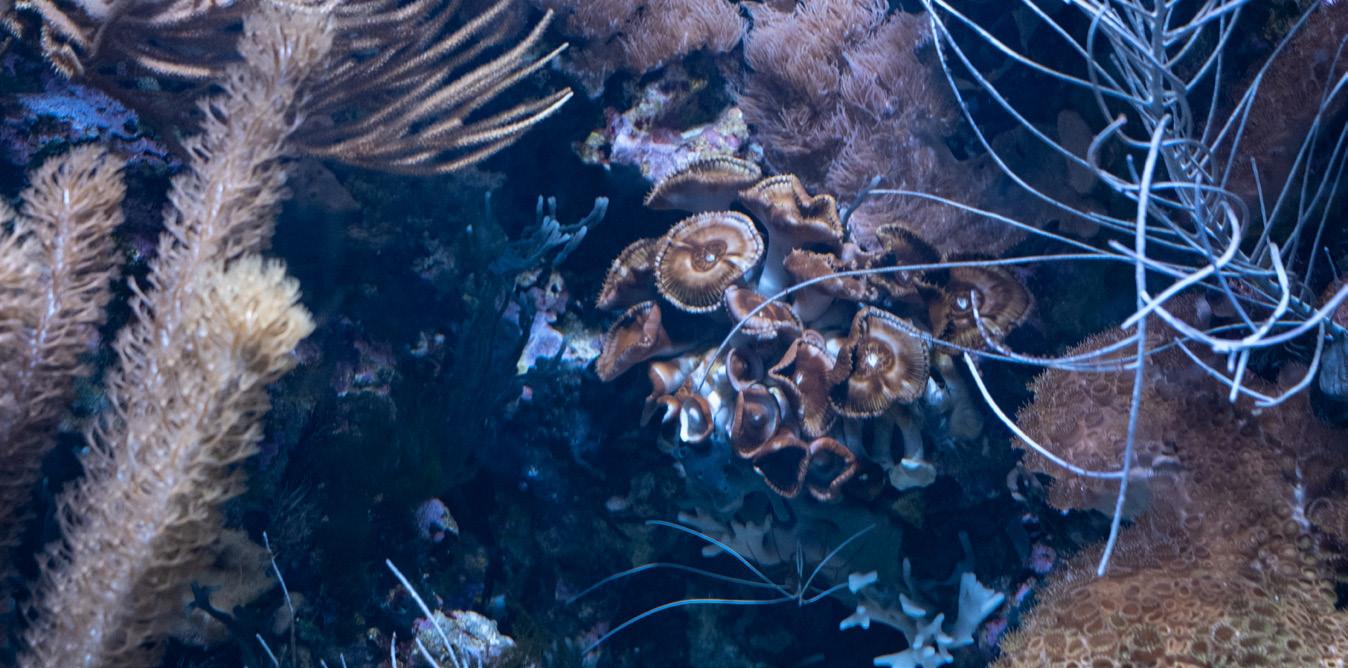
Scientific discoveries are often acts of social defiance. For a new way of thinking to catch fire, the scientists proposing it need to do more than light the match. But once radical new ideas catch, spreading faster than any attempts to douse them, they burn with the power to topple not only decades of built-up theories but also the social power structures behind them: The teachers suddenly become the students.
As our scientific institutions continue to grow, the social mechanics of science have slowed under their own weight, seized up from complexity, and faltered in producing new knowledge. The sheer volume of new papers has overloaded scientists’ ability to create concerted efforts. The norms and opaqueness in scientific publishing have created a reproducibility problem, crippling scientists’ ability to build upon and critique the work of others. So, to forge tangible progress, science demands researchers to outmaneuver these social standards.
The ones who success — lighting fire to tradition and navigating complex social dynamics with finesse and flair — aren’t technocratic, tedious, or mundane people: They’re deviant. In this issue of NU Sci, we share the stories of the people reimagining science with confidence and style.
Science activists are rethinking the structures of science itself, from writing searing papers outlining the dysfunction in scientific institutions to protesting for the fair pay and treatment of graduate student workers. Other researchers have turned to nature for inspiration, using the products of millions of years of evolution to better understand medicine and engineering principles. Medical scientists have begun interacting with alternative medicine in new ways, bringing fresh perspectives into the field while fiercely maintaining scientific rigor.
Together, these thinkers form a prototype of a radically different version of science, built for the future. Their tendencies toward eccentricity, unique perspectives, and unfettered candidness can leave you in a state of wonder, surprising clarity, and much-needed discomfort.
I thank the writers, designers, and photographers; the members of our marketing, outreach, and web teams; the e-board; and our readers — all of whom have contributed to this issue of NU Sci
President Abigail Potter
Editor-in-Chief
Noah Haggerty
Senior Editors
Abigail Potter ▪ Lily Weber
Head of communications
Lily Weber
Treasurer
Reshika Sai Devarajan
HEADS OF DESIGN
Parker Hitt ▪ Jasmin Patel
HEAD OF MARKETING
Sam Klein
HEAD OF OUTREACH
Caelah Cross
HEADS OF PHOTOGRAPHY
Ian Hay ▪ Gus Mueller
Head of web
Amanda Bell
WEB TEAM
Curie Cha ▪ Raisa Bhuiyan ▪ Annika
Chang ▪ Patrick Donnelly ▪ Ethan Szeto
Editors
Anushka Biswas ▪ Isabelle Brandicourt
Maya Brinster ▪ Christina Curran ▪ Jason
Denoncourt ▪ Anna Ducroiset ▪ Dessy
Dusichka ▪ Caroline Gable ▪ Nethra Iyer
Lilly Schar ▪ Emma Tusuzian ▪ Catrin
Zharyy
Outreach & MARKETING teamS
Maya Brinster ▪ Tonia Curdas
Deborah Oke
Design team
Deya Arnold ▪ Amanda Bell ▪ Nicholas
Berry ▪ Annie Christie ▪ Josephine
Dermond ▪ Sophie Donner ▪ Ananya
Jain ▪ Evelyn Milavsky ▪ Inbar Ofer
Tommy Paulus ▪ Vy Phan ▪ Vianna
Quach ▪ Jamie Tishkoff ▪ Samadhi
Wijethunga

PHOTOGRAPHY TEAM
JiaJia Fu ▪ Mimi Perez ▪ Prachi Thakur
Follow us: @nuscimag
Read our work: nuscimag.com
Contact us: nusciencemag@gmail.com
Noah Haggerty Editor-in-ChiefCover Photos by Ian Hay and Gus Mueller

The rings of Saturn, the sixth planet and second gas giant from the sun, are no mystery. Merely tannish-brown at first glance, with more recently discovered gray and pink tones, Saturnian rings are much brighter than those of Jupiter, the fifth planet and first gas giant from the sun. While all four gas giants (Uranus and Neptune being the others) have rings, Jupiter’s are perhaps the most enigmatic and interesting.
Better known for its Great Red Spot, an immense storm that has persisted for well over two centuries, Jupiter is the most sizable planet in the solar system. The gas giant’s mass is more than two times that of all the other planets of the solar system put together. In contrast to Saturn’s rings, which are composed of ice, Jupiter’s rings are composed of dust and are difficult to see. Discovered in 1979, more than a century and a half later than Saturn’s rings, Jupiter’s rings appear much dimmer than Saturn’s, even though Jupiter is much closer to Earth. Although Jupiter is such a large plant, its rings are not very thick.
The nature of Jupiter’s rings, discovered by researchers from the University of California at Riverside (UCR), relates to Jupiter’s four largest moons. Called the Galilean moons, these include, from largest to smallest, Ganymede, Callisto, Io, and Europa. The moons, due to their masses, have a strong enough gravity to project ice outside of the planet’s orbit by altering the orbital motion of the ice, leading it to smash into the moons. The moons would rapidly break any big rings that would otherwise develop.
Consequently, it is improbable that Jupiter ever previously had any sizable rings.
Besides influencing Jupiter’s rings, the Galilean moons are notable for many other reasons. The moons are only four of Jupiter’s eighty. The Galilean moons, discovered by Galileo Galilei in 1610, were the earliest moons found after Earth’s moon.

The first two moons are Io and Callisto. Io produces the most intense and frequent volcanoes in the solar system. Io’s exterior contains sulfur in a number of different shades. As Io revolves around Jupiter, the planet’s intense gravity triggers changes in the shape of its moon, a phenomenon known as “tides,” which then triggers volcanoes. The second moon, Callisto, is extremely old and has eight craters, indicating that comets likely struck the surface of the moon previously.

The next two moons, Europa and Ganymede, are even more interesting due to their possible potential for life. Europa is covered mainly by ice, below which might be a sea of water. Experts believe that Europa may have two times more water than Earth. Life is located close to underground volcanoes on Earth and in additional harsh environments, which may have parallels to the geographical features of Europa. Thus, Europa may be able to support life. Experts believe that Europa’s ice is 10 to 15 miles thick and sits atop an ocean 40 to 100 miles in depth. This amount of water is remarkable given that Europa’s
diameter is merely a fourth of the earth’s diameter. A spaceship could potentially allow observation of the ocean from space, as Europa’s sea may be propelling water into space.
Ganymede is the largest moon in the solar system, even bigger than Mercury. It is the sole moon discovered to have an intrinsic magnetic field. Because of the magnetic field, the moon has auroras, strings of high-temperature, bright, electric gas, rotating around the moon’s north and south poles. In addition, NASA’s Hubble Space Telescope has found what may be a body of saltwater underground on the moon. Scientists believe that this sea, situated beneath a layer of ice 95 miles thick, may have a greater amount of water than Earth’s entire surface, and be approximately 60 miles thick. This water may support life, an enthralling possibility. Researchers believe that the contact between the water and the rocky terrain beneath it is integral to supporting life.
Jupiter’s rings have captivated scientists, and are impacted by Jupiter’s Galilean moons. The moons are fascinating in and of themselves, particularly in that Ganymede and Europa may be able to support life. Only time will tell what other fascinating discoveries will be made about the largest gas giant in the solar system.
Planetary Science Journal (2022). DOI: https://doi. org/10.48550/arXiv.2207.06434
SHUTTERSTOCK BY
BY

Humans are becoming cognizant of two daunting possibilities: they either are or are not alone in the universe. Some assert that the former is more terrifying, while others contend that the latter is. Regardless of which is true, extraterrestrial life has still yet to reach out to humans. The ultimate conundrum, like Enrico Fermi famously asked, is “where is everybody?”
Scientists have explained this lack of communication by proposing the existence of the “Great Filter,” a theoretical wall that barricades some stage in a timeline, beginning with life occurring due to the right conditions and ending with the colonization of the galaxy by an intelligent species. Since it is unknown at which point the filter occurs, it may either exist either before or after current human existence. An existence before implies that only a select few civilizations were able to surpass the filter and remain, humankind included. Should the wall be after the existence of humans, civilizations before must have already hit the wall and stopped existing, and humans are doomed to face the same fate. As a result of the “Great Filter”, other lifeforms are unable to exist, are too limited, or will stop existing soon.
Astrobiologists are united in their theory that there must exist a plethora of planets within the infinite universe that holds the necessities to sustain life — necessities that would eventually lead to the formation of intelligent life and allow it to embark on a journey similar to Earth’s. However, there is no concrete evidence to validate this conclusion. This theory is known as the Fermi Paradox, named after the famous scientist Enrico Fermi. Theoretically, the conditions for life to thrive beyond Earth are undeniable, yet not a single extraterrestrial being has reached out.
There are three possible explanations for this paradox, each with its own uncertainties: aliens do exist, aliens have yet to contact humans, and aliens do not exist. Starting with the first, some researchers theorize that aliens have already been to Earth and left evidence that has yet to be discovered. However, there is still a lack of concrete evidence to suggest that anyone besides humans has ever set foot on Earth. Another theory is that humans descended from aliens. If
this was the case, though, there should be some proof of the original alien species, which there is not. The last theory is that humans are trapped on Earth in a zoo-like simulation, isolated from the rest of the universe and monitored by aliens.
A speculation within the category that aliens have not yet facilitated communication is that messages have not reached Earth yet due to the time it could take to travel through space. However, the universe began billions of years ago, so it is unlikely that a message would require longer than this to reach humans. Additionally, alien intelligence may surpass those of humans and be trying to communicate through methods unfamiliar to those on Earth or have no desire to communicate. The limitation of these theories is that there are an infinite number of galaxies, so there should be at least one civilization that understands the communication methods that humans utilize, match human intelligence, or be curious about human existence.
Theories that fall under the third category, that aliens merely do not exist, bring to light the facts that habitable zones are extremely rare; the habitat to nurture life has to contain water and be the optimal distance from a star, and the galaxy’s harsh conditions limit life. As plausible as these theories may sound, they too are improbable; although humans could be the first and only lifeforms in the universe, the conditions that led to their life are neither specific nor special to just Earth. The sun around which humans revolve is an average star, the same as the billions of others that formed and also allowed life to be possibly eons before.
Every explanation has limitations, and humans may have to come to terms with the fact that they may never know why extraterrestrial life refuses to communicate. Perhaps, for the sake of human sanity, the question of whether we are truly alone in the universe or not should be left unanswered.
Encyclopedia of Astrobiology (2011). DOI: 10.1007/978-3-642-11274-4_1862 Research Square (2021). DOI: 10.21203/rs.3.rs-639164/v2Have you ever purchased something online? A T-shirt? A new pair of shoes? If so, you are among the majority of people with their credit card or bank account information stored privately online through encryption. As a result, you are also among a group of people who could be at risk of theft or fraud due to new advancements in quantum computers.
Right now, companies use encryption on their websites to safely protect and transmit your private information over the internet. To simplify the concept, encryption takes your information and garbles it into a long code that is a nonprime number and can only be broken if factored. The main goal of encryption is not to make it impossible for someone to access the information, but just hard enough that no one would want to attempt it. For instance, one long nonprime encryption number may take 2,000 years of computer processing time to break and factor into prime numbers. Therefore, a random individual using their laptop would not even be able to attempt to decrypt that code, but someone with a server farm of 24,000 computers, on the other hand, might only need a month to break that same encryption. This means that computer processing technically can be used for encryption, it just requires a lot of time — time that not a lot of people have or are willing to use. However, a new technology called quantum computing has been developed that might be able to crack our current encryption systems in a much more reasonable timeframe.
Researchers first discovered quantum computers in the 1990s, with MIT’s mathematician Peter Shor’s realization
that quantum superposition could be applied to factoring integer numbers into primes. Quantum superposition is the idea that things on the atomic level can be in multiple states at once, like how a coin can be heads or tails at the same time. In quantum computing, the system uses something called quantum bits. A normal bit in a computer is either a “0” or a “1,” which is synonymous with it being either the heads or the tails of a coin. In comparison, a quantum bit can exist in a superposition of the two states: partly a “0” and partly a “1.”
a quantum computer that could break RSA would need at least 1 million quantum bits.
While quantum computers right now may not have the ability to completely unravel our system of protecting online information, experts believe that the algorithms will most likely be able to eventually do so. The effect of this could be utterly catastrophic. As Michele Mosca, a mathematician from the University of Waterloo, said, “We’d suddenly switch from managing the quantum-safe migration through technology lifecycle management to crisis management.” In other words, trust in the internet as a whole would be gone and everyone would scramble to regain their lost privacy.
To try and simplify the idea, the states all run in parallel and in connection with each other in a very specific and algorithmic way that allows the system to test an infinite number of answers and detect the “correct answer.”

Shor essentially came up with an algorithm that could break our current large-prime number encryption system called RSA. However the current prototypes available are very small and are not able to take on an intricate system such as RSA. More specifically, the largest currently existing quantum computer has 433 quantum bits, while
Researchers are hoping to create systems that are less susceptible to quantum computing. Currently, the National Institute of Standards and Technology is working to discover systems that could resist quantum computers. They have made multiple prototypic algorithms based on lattice cryptography, a special quantumresistant form of cryptography that is unfortunately costly and difficult to implement, but experts strongly urge countries to make the switch before it’s too late. The White House has already issued a memo urging all federal information to be protected by these new systems. Hopefully their new-found “quantum-safe” systems will be strong enough to hold off quantum computers, or the country’s most important information will be incredibly vulnerable online.
Nature (2023). DOI: 10.1038/d41586-023-00017-0
While quantum computers right now may not have the ability to completely unravel our system of protecting online information, experts believe that the algorithms will most likely be able to eventually do so."
Monkeys can play video games with their minds. Rats can control each others’ brains. Previously injured humans can restore sensation and function in limbs. These impossible-sounding events are all achievable with brain-computer interfaces (BCIs), which are systems that use electrical devices to collect neural signals from the central nervous system and, using algorithms, translate them into commands that operate output devices like computers or robotic limbs. There are ample cutting-edge applications of BCIs, but their biomedical applications have thus far been the most thoroughly studied.
Because they are still in their experimental stages or currently being tested in clinical trials, their long-term effects have not been well-known, that is, until recently. A study published in Neurology early this year offers insight into the safety profile of such devices and optimism that they are feasible for widespread therapeutic use in the future.
In the study, researchers from multiple institutions provide a comprehensive analysis of almost two decades of clinical trial testing for BrainGate, a leading neural interface system that uses a surgically implanted device to help those affected by paralysis, strokes, spinal cord injury, or other neuromuscular disorder regain control over their limbs. In the system, a microelectrode array smaller than a contact lens is attached to the surface of the motor cortex, the area of the brain that controls limb movement. The device gathers neural signals associated with body movement and subsequently sends them to a computer for decoding, which then controls an output device. So far, BrainGate has allowed clinical trial participants to move cursors, robotic arms, and a previously paralyzed limb by simply thinking about movement.
Researchers analyzed data regarding the safety outcomes of 14 participants aged 18–75 that participated in the ongoing clinical trial and reported a favorable risk-benefit ratio. The data showed that there were a total of 68 adverse events
caused by patients’ use of the device from 2004–2021. The most common minor adverse event was skin irritation around the implantation site, but six of the events were serious. Two participants with a history of traumatic brain injury reported postoperative seizures, but they were easily treated. None of the six events resulted in increased disability, death, or device removal according to the researchers. Overall, data revealed low rates of adverse effects and showed that BrainGate’s safety is similar to that of other implanted neurologic devices such as deep brain stimulators or responsive neurostimulators. The researchers say this finding, along with recent performance advancements, supports continuing development of the technology.
This report has drastically increased optimism that future widespread use of implantable BCIs as therapeutic devices will be possible. After its publication, Dr. Leigh R. Hochberg, a brain science professor and engineer at Brown University, stated that “Intracortical brain-computer interfaces have so much promise for restoring communication and mobility … The interim safety profile reported today supports the possibility that these systems may become restorative neurotechnologies for people with paralysis.”
Although there is much more work to be done, BrainGate researchers’ goal is for BCIs to eventually be fully implantable and available to all users at all times. John Donoghue, professor of neuroscience at Brown University and one of the principal BrainGate pioneers, explains that “The golden day would be when somebody who is paralyzed gets a BrainGate-like system implanted, and they go play basketball.” After the recent publication of the safety report, it is promising that this golden day may soon become a reality.
Neurology (2023). DOI: 10.1212/WNL.0000000000201707
Cell (2020). DOI: 10.1016/k.cell.2020.03.054
The Lancet (2017). DOI: 10.1016/S0140-6736(17)30601-3
Nature (2013). DOI: 10.1038/srep01319
National Library of Medicine (2012). DOI: 10.1016/j.mayocp.2011.12.008
So far, BrainGate has allowed clinical trial participants to move cursors, robotic arms, and a previously paralyzed limb by simply thinking about movement.”MAYA BRINSTER, BEHAVIORAL NEUROSCIENCE, 2025
 BY CHRISTOPHER JURCISIN, BIOCHEMISTRY, 2024
BY CHRISTOPHER JURCISIN, BIOCHEMISTRY, 2024
Viruses can be catastrophic. Their natural purpose is to infect and replicate, hijacking hosts regardless of the consequences. They can be deadly and are a large source of suffering, even in our modern society. Smallpox, influenza, and COVID-19 are clear examples of viruses that have had widespread, devastating public health effects. Therefore, it seems counterintuitive to consider using viruses for therapeutic purposes. However, one class of viruses that do not infect animal cells could prove useful as a delivery method for cancer drugs — bacteriophages.
Bacteriophages naturally only infect bacteria and are incapable of infecting eukaryotic cells. Once they recognize and attach to a bacterium, they insert their genetic information and either integrate their genome into that of the host, as in the case of lysogenic phages, or directly produce more phages and break apart the bacterium, as in the case of lytic phages. The key features of bacteriophages are their specificity for infection and ability to deliver genetic material, properties that make them well-suited for therapeutics.
Delivery is a constant struggle for chemotherapeutics. Poor delivery systems lead to inefficiency as a drug may spread to untargeted areas within the body and reach tumors at a concentration too low to be effective. A lack of specificity is also the primary cause of off-target effects, leading to the detrimental side effects often associated with chemotherapy such as nausea and hair loss.
Through genetic engineering, phages that bind to cancer-specific target receptors can be produced. Unlike other viral vectors used in therapeutics, such as adenoviruses, phages are not pathogenic. This means that therapeutic phages can bypass healthy cells without infecting them, preventing off-target effects. This lack of interaction makes them less likely to elicit an immune response. An immune response toward the phage would cause sickness in the patient and reduce the effectiveness of future phage-based therapeutics, while also interrupting the desired effect of the therapy.
Once the phage reaches the tumor, it binds to its unique target cancer receptors and is taken into the cancer cells. From there, the genetic payload serves a variety of functions depending on the goal of the therapy. The payload can work indirectly as immunotherapy by incorporating genetic information leading to the production of membrane-bound signals in a process known as “phage display.” This signaling display acts as a beacon that allows for beneficial targeting by the patient’s
DESIGN BY JASMIN PATEL, BEHAVIORAL NEUROSCIENCE, 2025immune system, allowing previously hidden or masked cancer cells to be identified and killed. A more direct bacteriophagebased cancer therapeutic is the delivery of genetic material that causes death in the target cell. Once brought into the cell, the phage would release a DNA or RNA payload that could produce or alter the expression of tumor-killing proteins. For example, a team used recombinant phage particles to deliver a long non-coding RNA that restored the expression of p53, an important tumor suppressor gene frequently mutated in cancer. This reintroduction of a key protein induced apoptosis and decreased cancer proliferation.
Alternatively, scientists can engineer phages to display cancer-specific antigens on their capsids, or outer coatings, making them effectively act as cancer vaccines. This would not require tissue-specific delivery as the foreign antigens would elicit an acute immune response toward the cancer, regardless of phage localization. That immune response would then trigger the production of antibodies targeting the tumor, marking it for attack. The phage-based vaccines induce a stronger response when compared to a similar DNA vaccine as they can be engineered for increased immunogenicity and specificity. Additionally, the stored adaptive immunity towards particular cancers provided by the vaccine approach is especially beneficial in the case of resurgence.
Bacteriophages represent a possible solution to one of the biggest roadblocks in drug therapies: delivery. Their structure and specificity give them a variety of advantages over previous generations of drug delivery. Phages are stable in the body and are adapted to bypass eukaryotic cells. Importantly, they are also cheap to produce and easily engineered, allowing for flexibility in function. This flexibility permits multiple avenues of research and a wide range of potential therapeutics. In the burgeoning era of highly personalized genetics-based oncology, phages could play a key role in making patient-specific medicine biologically effective and economically feasible.
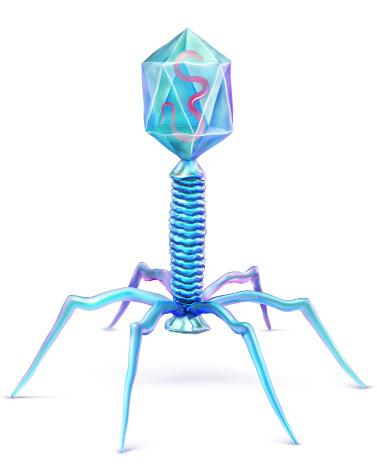
Pharmaceuticals (2021). DOI: 10.3390/ph14020161
Cancer Genomics Proteomics (2016). PMID: 26708596
Viruses (2018). DOI: 10.3390/v11010010
Oncotarget (2016). DOI: 10.18632/oncotarget.8115
Cancer Immunology Research (2018). DOI: 10.1158/2326-6066
PHOTOS BY SHUTTERSTOCKFor such a tiny microscopic organism, the algae behind the Gulf of Mexico’s toxic red tides inflicts a mighty force. Characterized by discolored water, dying marine life, and the release of respiratory irritants, red tides have plagued the Gulf since the 1800s and have since increased in intensity and frequency. Karenia brevis, the dominant algae present in Florida red tides, produces harmful toxins, known as brevetoxins, that cause severe respiratory irritation and neurological effects in humans. Nevertheless, the algae shocked scientists by also creating a chemical with the potential to treat cystic fibrosis.
The initial discovery of the chemical, brevenal, and its abilities was accidental. A team of researchers at the University of North Carolina Wilmington worked to measure the toxicity of different compounds extracted from brevetoxins by exposing guppies to these various samples. Due to a lack of guppies, the team recycled surviving guppies from one treatment to use in treatments with other isolated compounds from brevetoxins. Despite adding a known toxic and lethal compound to beakers with the surviving fish, the guppies surprisingly did not die. The first compound these guppies were exposed to had practically served as an antidote to the harmful effects brought about by red tides. This compound, later coined as brevenal, was found to be a natural brevetoxin antagonist. After further research, the researchers learned specifically how brevenal functions against brevetoxins, by blocking toxins from binding to sodium channel receptors.
Cystic fibrosis, a genetic disease affecting mucus production, works
similarly to brevetoxins, also heavily impacting sodium channels. Normally, mucus is thin and slippery, but with cystic fibrosis, mucus thickens, leading to blockage and inflammation in the lungs, pancreas, and other organs. Cystic fibrosis causes increased transportation of sodium across airway linings, and this over-absorption of sodium, alongside defective chloride secretion, draws water away from the airways. These impacts on mucus production, through defective sodium transport, mean that sodium channels are a target for cystic fibrosis drugs.
as higher amiloride concentrations. The team’s findings suggest that brevenal is more potent and effective than amiloride.
Silurian Pharmaceuticals, a company based in Oakland, California, has attempted a phase 1 clinical study with brevenal as a treatment for cystic fibrosis. In addition to human use, brevenal may be used on Florida’s endangered manatees. Manatees can both inhale or consume brevetoxins, and this poisoning leads to paralysis and drowning. The Lowry Park Zoo in Tampa, Florida, planned to test brevenal as a treatment on rescued manatees poisoned by brevetoxins, but implementation in the field will take time. A full recovery from brevetoxicosis in manatees typically takes months, so brevenal could accelerate this process.
Researchers at the Mount Sinai Medical Center in Miami, Florida used a model exposing allergic sheep to brevetoxins to compare the beneficial effect of brevenal to that of a different cystic fibrosis drug, amiloride. Both brevenal and amiloride work to block toxins from binding to receptors in the sodium channel. Not only did brevenal prevent the toxin-induced mucus thickening, but it also stimulated mucociliary clearance. Brevenal thinned mucus for easy expulsion by the sheep, confirming the potential of this compound to treat diseases with mucociliary dysfunction. Additionally, low concentrations of brevenal demonstrated the same effect
There is currently no cure for cystic fibrosis, but various treatments have surfaced to control symptoms. Cystic fibrosis can inflict life-threatening symptoms, creating a growing need for successful treatments. While brevenal has demonstrated immense promise, there is still a long way to go before brevenal-derived drugs could be used on humans. Many emerging treatments prove to be unsuccessful, so the continued search for cystic fibrosis treatments is crucial.
American Journal of Respiratory and Critical Care Medicine (2004). DOI: 10.1164/rccm.200406-735OC
Journal of Experimental Pharmacology (2021). DOI: 10.2147/JEP.S255377
Science (2007). DOI: 10.1126/science.316.5831.1561
PHOTOS BY SHUTTERSTOCKNot only did brevenal prevent the toxin-induced mucus thickening, but it also stimulated mucociliary clearance.”
 BY HIBA HUSSAIN, BIOLOGY, 2024
DESIGN BY JASMIN PATEL, BEHAVIORAL NEUROSCIENCE, 2025
BY HIBA HUSSAIN, BIOLOGY, 2024
DESIGN BY JASMIN PATEL, BEHAVIORAL NEUROSCIENCE, 2025
When functioning optimally the human brain poses one of the largest challenges encountered in medicine. For the past 50 years, scientists have struggled to find methods to bypass the blood-brain barrier (BBB), a vital immunological barrier responsible for the transport of select molecules into the brain. Solving this problem would allow for the development of minimallyinvasive targeted therapies for central nervous system (CNS) diseases. Making progress in drug delivery to the brain is especially pressing as the elderly population continues to grow, leading to the increased incidence of neurodegenerative disorders and brain cancers.
While overcoming the BBB poses a significant challenge, the application of nanomedicine is rapidly closing the gap between science fiction and reality. For instance, Professor Qin and his team at UT Dallas are harnessing lasers and nanoparticles to open up tight junctions, or joints that regulate the transport of molecules in and out of the brain. The treatment works by injecting gold nanoparticles intravenously. Next, the area of interest is pulsed with one picosecond, or 10-12 seconds, of a laser to temporarily increase the permeability of the BBB. The intensity of this permeability change can be modulated with different laser intensities to target drug carriers of specific sizes. In the recent study, Qin and colleagues harnessed drug carriers such as liposomes, adenoviral vectors, and antibody cargos, with each demonstrating diffusion through the BBB. Notably, this drug delivery system avoids inhibiting the movement of blood vessels and avoids damage to the BBB — two factors that have been obstacles in past approaches. In the future, Qin and his colleagues at UT Southwestern Medical Center are hopeful the system will be adapted to treat brain tumors and ALS and aid in stroke recovery. That being said, the system must first show results in complex preclinical models, but use in humans is not yet out of the question.
Reminiscent of "The Magic School Bus," other approaches to drug delivery include shrinking treatment further to allow for
engineered micro-robots. Professor Choi and his team at South Korea’s Gyeongbuk Institute have developed a magnetically controlled micro-robot, termed Cellbot, that delivers stem cells to the brain. Particles termed SPIONs, or superparamagnetic iron oxide nanoparticles, are applied intranasally and guided via an external magnetic field. Once in the brain, SPIONs stimulate the growth and differentiation of important neuron types and neural precursor cells, which would help treat neurodegenerative disorders. So far, Choi has demonstrated success in mice models and hopes to replicate results in preclinical models. Another micro-robot approach in ideation utilizes the body’s natural defense system to deliver drugs. Dr. Palagi and his colleagues at Italy’s Santa Anna School of Advanced Studies are working on a model to indicate that microrobots can be disguised as white blood cells. In this manner, the microbots could pass through the BBB simply by perceiving environmental conditions and mobilizing other immune cells. The team’s approach illustrates how an understanding of natural systems can be modified — or perhaps deviated — to apply to new challenges, rather than reinventing the system as a whole.
The journey through the BBB is an arduous process that still requires a significant amount of research for effective and safe implementation in humans. The biocompatibility of these treatments needs to be explored, along with how drug carriers are metabolized. Furthermore, our current medical technologies are insufficient for the proper control of microdevices. Even so, it should still be noted that the scientific community is making incremental progress towards bypassing the BBB, boldly going where no drug has gone before.
Advanced Healthcare Materials (2021). DOI: 10.1002/adhm.202100801
Nano Letters (2021). DOI: 10.1021/acs.nanolett.1c02996
CORDIS (2021). DOI: 10.3030/948590
PHOTO BY SHUTTERSTOCK
The only place that prioritizes its department of defense more than the United States is the human body. We have a comprehensive immune system with two lines of protection: barriers and fighters. Within this second line of defense, antibodies act as soldiers that circle through the bloodstream marking foreign invaders for destruction.
Specifically, the immune system’s internal army consists of many types of white blood cells, such as B cells, T cells, and macrophages that work together to recognize and destroy pathogens. B cells, with assistance from helper T cells, create antibodies. Antibodies are Y-shaped proteins that connect to antigens, unique markers carried by pathogens. Some antibodies directly disarm the invader while others cause macrophages to engulf it or signal killer T cells to initiate cell death of infected cells.
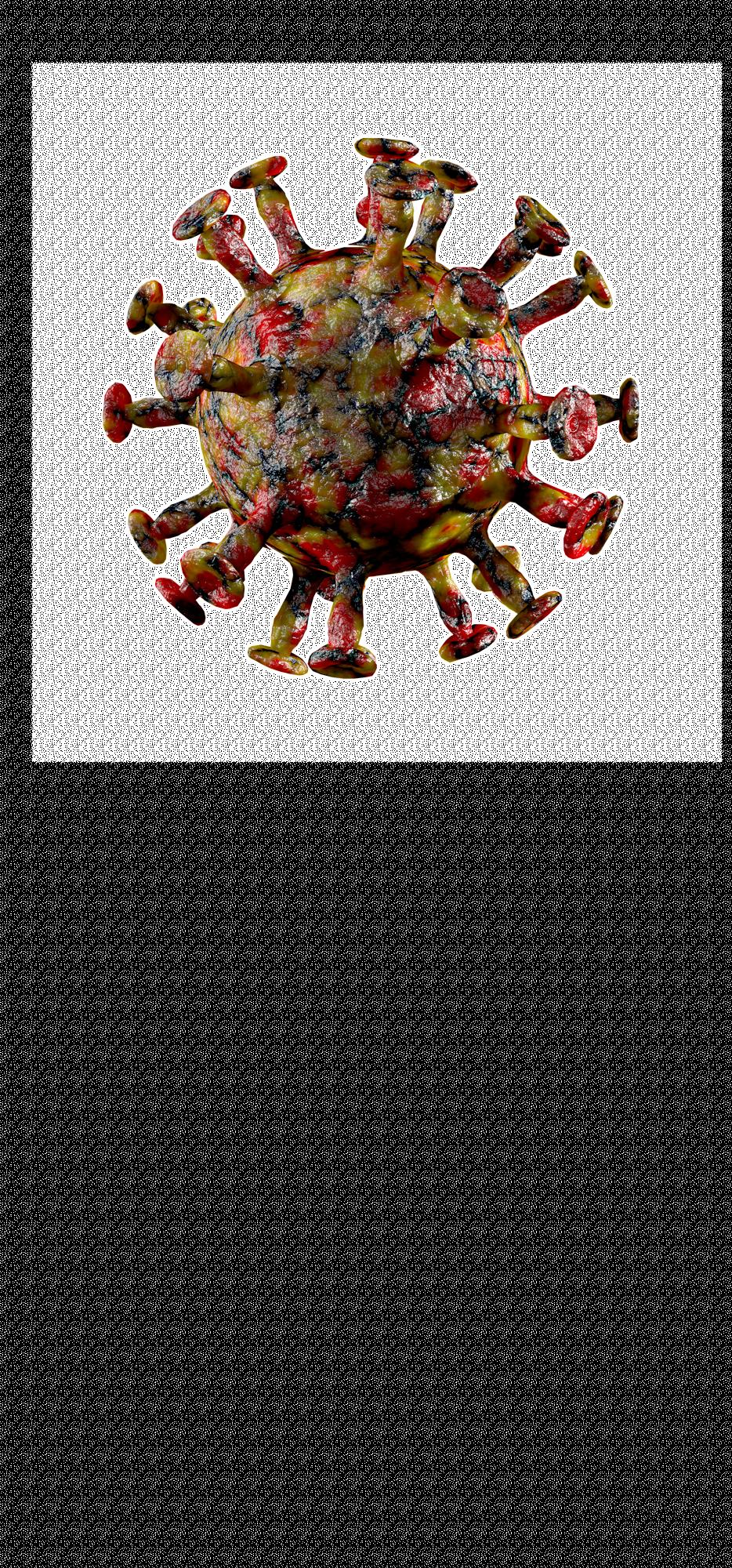
New therapies are taking advantage of the strategy our bodies already have in place for attacking pathogens. Physicians can now send in more troops to help fight off various diseases, from type 1 diabetes to Alzheimer’s, using monoclonal antibodies.
Monoclonal antibodies are essentially artificial antibodies designed to target specific cells or viruses by binding to a particular antigen carried on their surfaces. To produce these molecules in bulk, scientists inject lab mice with the target antigen. Then, they isolate the B cells from the animal and fuse them with tumor cells, resulting in hybrid cells that produce the desired antibody and divide indefinitely. Originating from a single B cell, each daughter cell produces identical antibodies, clones that only bind to the target antigen.
While this technology has been around since 1975, applications of these artificial antibodies have diversified in the past few years. One exciting treatment uses monoclonal antibodies to defer the onset of type 1 diabetes symptoms. Second only to asthma, type 1 diabetes is one of the most prevalent childhood illnesses, and this is the first time there is any available preventative therapy. In type 1 diabetes, the body’s immune system turns against cells in the pancreas that normally produce insulin. If a child could have two extra years before developing the disorder, they could spend 730 more days without testing their blood sugar every few hours, injecting themselves with expensive exogenous insulin, and worrying about mistakes sending them to the emergency room. The new infusion treatment Teplizumab (the suffix “mab” refers to monoclonal antibody) offers just that.
Teplizumab is a medication traditionally used to prevent organ recipients from rejecting transplants. The drug likely works by binding to receptors on the surface of T cells, preventing the cells from recognizing and destroying their targets.
Patients must be diagnosed before symptoms of blood sugar imbalances begin in order to qualify for this intervention. Siblings of patients who are already living with diabetes make up a large portion of the drug’s recipients as they have reason to get tested for autoantibodies and are more often diagnosed before they progress to a symptomatic stage.
Scientists have also been working on Alzheimer’s treatments using monoclonal antibodies. This research focuses on betaamyloid plaques, which are buildups in the brain believed to be responsible for the cognitive decline seen in Alzheimer’s patients. Targeted monoclonal antibodies bind to these betaamyloid plaques and recruit white blood cells to destroy them.
There are several monoclonal antibody drugs for Alzheimer’s disease available today, though none of them are miracle cures. In a two-year study on Gantenerumab by Roche Pharma, the drug was found to reduce the amount of betaamyloid plaques to below the “amyloid-beta positivity threshold” in 51% of participants. This means that their brain scans would not indicate a clinical diagnosis of Alzheimer’s disease. Unfortunately, later phases of Gantenerumab testing found no clinically significant reduction in cognitive decline. This situation repeated itself with Biogen’s Aducanumab trial at the end of 2019, which ended prematurely because the data suggested futile chances of participants gaining significant quality-of-life improvement despite the reduction in betaamyloid plaques. Unlike these outcomes, the most recent Alzheimer’s monoclonal antibody drug, Lecanemab, was shown to slow cognitive decline moderately, which pushed the FDA to grant accelerated approval of this drug on Jan. 6 of this year.
Our bodies are armed with fighters of disease, eager to combat invaders and traitors. Harnessing the power of our body’s own defense system is bringing hope to those with some of the most devastating and previously unconquerable diseases. Monoclonal antibodies are just scratching the surface of the potential cures we may discover by directing white blood cells to fight their own battles.
The New England Journal of Medicine (2023). DOI: 10.1056/ NEJMoa2212948
Alzheimer’s Research and Therapy (2022).
DOI: 10.1186/s13195-022-01110-8
Journal of Alzheimer’s Disease (2022). DOI: 10.3233/JAD-220046
Alzheimer’s Research and Therapy (2019).
DOI: 10.1186/s13195-019-0559-z
The New England Journal of Medicine (2019). DOI: 10.1056/ NEJMoa1902226
Alzheimer’s Research and Therapy (2017). DOI: 10.1186/s13195017-0318-y Diabetes Care (2015). DOI: 10.2337/dc15-1419
From Georgia and Alabama in the South to Michigan and Maine in the North, the American chestnut was once a keystone species of the Eastern Deciduous Forest. In 1904, one out of every four trees east of the Mississippi was an American chestnut. It could reach heights over 100 feet, earning it the nickname “the redwood of the East.” The chestnuts it dropped were a key part of local ecosystems, providing regular food to the forests it so defined. By 1950, the American chestnut was functionally extinct in the wild. Four billion trees vanished in less than 50 years.
The culprit? Cryphonectria parasitica, otherwise known as chestnut blight. C. parasitica is a fungus native to East Asia, but in the late 1800s, it was accidentally introduced to America through imported chestnut saplings. This disease rapidly spread through the American chestnut population that lacked natural resistance to it, killing 99.9% of American chestnuts.
As soon as it went extinct, forestry professionals and botanists began working to save the American chestnut. They first tried crossbreeding it with Chinese chestnuts and then back with American chestnuts in an effort to transfer the genes that give east Asian chestnut species resistance to the chestnut blight fungus. This showed some promise, but the intrinsic randomness of inheritance and difficulty of predicting if any saplings are blight-tolerant meant that this method has not been successful in restoring American chestnuts to the wild in a meaningful way.
More recently, researchers at The American Chestnut Foundation and SUNY have been using genetic engineering to produce blight-resistant chestnut trees. After observing that C. parasitica kills chestnut trees by producing lethal quantities of oxalic acid, these researchers used Agrobacterium-mediated co-transformation to insert a gene called oxo, which encodes oxalate oxidase, into the genome of a preserved strain of American chestnuts. This new line was called Darling 58, and thanks to the addition of the oxo gene, it shows chestnut blight
American Chestnut
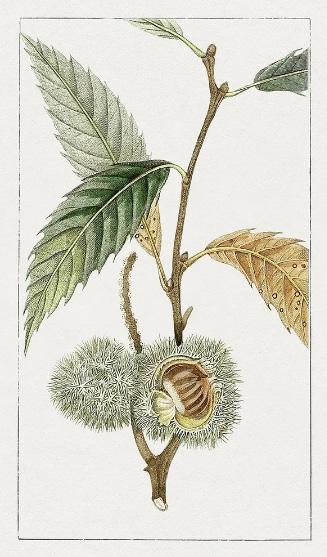
resistance comparable to Chinese chestnuts. Adding oxo to American chestnuts confers blight resistance because oxalate oxidase breaks down the harmful oxalic acid produced by C. parasitica infection into carbon dioxide and hydrogen peroxide.

Thanks to the incredible success of Darling 58, SUNY
Environmental and Forest Biology researchers have begun crossing it with other preserved American chestnut lines, as well as creating two other transgenic blight-resistant chestnut strains to ensure a future resurgent chestnut has enough genetic diversity. They have also applied to the US Forest Service for permission to freely plant these transgenic trees and bring the American chestnut back from the dead.
The move to release these trees into the wild has met some pushback from anti-GMO groups concerned about the unknown effects of releasing any genetically modified organisms into nature. However, the species is minimally altered, only adding in the genes to produce a single enzyme, which is already known to be harmless in the wild — the oxo gene originates from wheat. In January 2023, the Animal and Plant Health Inspection Service, a subset of the department of agriculture, finished an open comment period, soliciting public feedback on potentially giving these transgenic trees unregulated status.
The research into restoring the American chestnut provides some much-needed hope both in restoring this keystone species but also in dealing with invasive species much more broadly. Though it will have to be done with care, the procedure of genetically modifying organisms to confer resistance to invasive species is one with broad applicability. As genetic engineering improves, it will only show more and more promise in helping humanity fix the ecological mess it has created.
Plants People Planet (2019). DOI: 10.1002/ppp3.10061
Transgenic Research (2013). DOI: 10.1007/s11248-013-9708-5
PHOTOS BY BIODIVERSITY HERITAGE LIBRARY
Globally, Indonesia hosts the largest concentration of mangrove forests, accounting for over 20% of the world’s total mangrove population. According to the United Nations Food and Agriculture Organization, mangrove forests are among the most threatened ecosystems on our planet, with Indonesia reporting the greatest decline in population of any concentrated area of mangrove forest. Without intervention, the ongoing loss of mangrove forests may create a feedback loop in which stored carbon dioxide, absorbed from the atmosphere as trees grow, is released, driving further global warming and an increase in the occurrence of natural disasters. Such natural disasters have the potential to exacerbate damage to the already feeble coastal communities of Indonesia in the absence of the buffer that mangrove forests provide.
Mangrove trees are ecosystem engineers, maintaining and manipulating the ecosystem around them. The dense roots of mangrove trees serve to bind coastal soils and slow tide flows before they reach the shoreline, preventing coastal abrasion and tidal flooding. Furthermore, coastal Indonesians rely heavily on the ecosystem services that these forests provide. Among locals, mangrove forests remain a source of economic and cultural security, with many families relying on the trees for direct benefits such as food, medicine, and lumber as well as indirect benefits such as tourism and cultural heritage. One of the biggest threats to coastal Indonesian communities is coastal degradation, which facilitates both erosion and tidal flooding of the surrounding area. For decades, locals have tolerated the impacts of standing water invading their settlements, but due to the warming climate, rising sea levels, and commercial development of previously forested land, tidal floods have become intolerable, sinking homes and ruining crop yields. These impacts have also prompted a series of other ramifications among these communities including the spread of infectious diseases, water scarcity, and an absence of security and comfort. The replanting of mangrove forests as a form of green infrastructure can act as a buffer for powerful waves that otherwise cripple residents’ homes and farms while continuing to supply coastal communities with the ecosystem services that they rely on.
Some local communities have organized community engagement events for the replanting of mangrove forests; however, these efforts may not be enough to mitigate the worst effects of the climate crisis. Fortunately, there have been global, large-scale efforts to restore mangrove forests. In December 2022, the United Nations recognized an initiative to protect Indonesia’s coastline against flooding as one of 10 conservation pioneering efforts. This initiative will apply an innovative approach using semi-permeable sea walls made of natural materials to trap soil in the roots of the juvenile mangroves as their foundation expands. The initiative is eligible to receive United Nations support, funding, and
expertise, but restoration efforts have not yet begun, thus little is known about the effectiveness of this proposal.
Green infrastructure has also seen a boom in popularity in New York, where the effects of climate change are threatening the urban coastal community. In New York City, Kate Orff’s landscape architecture firm, SCAPE, has designed a project titled “oyster-tecture” to relieve the city from storm surges and flooding using their very own ecosystem engineer, oysters. Similarly to mangrove forests, the 3D structure of an oyster reef acts as an effective buffer against incoming waves generated by extreme weather events such as Hurricane Sandy in 2012. Cities like Damak, Indonesia, which face similar threats to New York City, may benefit from a well-funded landscape conservation project such as this one.
Green infrastructure has seen a recent boom in popularity with many communities around the world looking to benefit from projects inspired by Orff’s “oyster-tecture.” Unfortunately, local communities such as those of coastal Indonesia don’t have the same resources as New York City. With help from major institutions such as the United Nations, smaller, local communities may have a chance at getting ahead of the climate crisis. Otherwise, they will have to play a deadly game of catch-up with the developed world. It is these less-developed nations that are already at a major disadvantage as climate change rears its ugly head and parts of the world become uninhabitable, forcing people out of the comfort of their homes and lives.
FAO (2020). DOI: 10.4060/ca9825en
Technium Social Sciences (2023). ISSN: 2668-7798
Nature Climate Change (2015). DOI: 10.1038/nclimate2734
Forests (2016). DOI: 10.3390/f7090183
Nature has provided endless wonder and inspiration for philosophers and artists since the birth of civilization. Now, increasing numbers of scientists have turned to Mother Nature, not as a source of beauty and contemplation, but to seek her guidance as the most resourceful engineer. In 1997, author Janine Benyus coined the term “biomimicry” to describe sustainable problemsolving and ideation by researching adaptations from nature. Three scientists have channeled a sense of openness and observation of nature’s innovations into breakthrough theories and techniques.
For centuries, it was thought that the origins of life on Earth were slow and incremental — random confluences of amino acids that gradually gave rise to complex lifeforms. A forthright junior researcher argued otherwise. Lynn Margulis settled at Boston University with a biology teaching position while raising her four kids. After 15 rejections, she published the paper “On the Origin of Mitosing Cells,” proposing that organelles in eukaryotes like mitochondria and chloroplasts were once free-living prokaryotic organisms. Now widely accepted as the theory of endosymbiosis, it states that an ancient single-celled ancestor engulfed another, sharing resources and safety within a cellular membrane as a new eukaryotic organism. Margulis credited the basic concept to earlier scientists, however, she unified various historical observations into one contiguous theory. Cooperation is everywhere in nature, from soil bacteria inhabiting rhizomes to oxpeckers ridding giraffes of their ticks, but the idea of two coexisting microbes spawning complex life was radical. She fiercely defended the theory without evidence. Later experimentation in 1978 indicated her theory was the only comprehensive

explanation for peculiar phenomena such as chloroplasts and mitochondria hosting their own DNA to produce unique protein machinery. Weathering a decade of criticism and dismissal from peers, a cellular evolution renaissance was born.
One of the most renowned and wellknown researchers, Jane Goodall shined a new light onto human nature and behavior by studying great apes. In 1960, she traveled to Tanzania, lacking formal training, and embarked on her groundbreaking work on the Gombe Stream chimpanzee colonies. Instead of treating her chimps as numbered subjects, her research methods were more personable, joining and living with them, yet avoiding anthropomorphizing. She recorded behaviors contrasting decades of convention (such as the idea that only humans wielded tools). In simple and painstaking observation, she identified individual personalities, complex social hierarchy and family dynamics, violent tribal warfare, and — most famously — chimpanzees using a stripped branch to fish termites out of the mound. In response to her revolutionary findings, her mentor Louis Leakey declared, “We must now redefine man, redefine tool, or accept chimpanzees as human!”
Frances Arnold has an atypical scientist’s biography: hitchhiking to protest Vietnam at 17 and motorcycling across Europe. Switching gears from nuclear physics to biochemistry, she delved into designing enzymes and new biosynthetic pathways. Enzymes are complex molecular machines composed of folded proteins composed of amino acids; millions have evolved for varying purposes, from driving DNA replication to digesting cellulose. The standard had been to identify specific DNA fragments, mutate them, and slightly
PHOTO BY MIMI PEREZchange the enzyme’s shape. She turned to evolution — nature's best optimizing algorithm. Termed “directed protein evolution,” she takes a protein’s DNA sequence, induces mutations, and generates a library of beneficial mutations creating a mutant with significantly enhanced activity or new function altogether. With only a fraction of protein diversity discovered and the power of controlled selection in the lab, researchers can develop tailored enzymes nonexistent in the wild: synthetic proteins for human-made problems. Directed protein evolution has become a bioengineering stable — applied to producing biofuels, bioplastics, new small protein pharmaceuticals, and metal absorption — earning Arnold the 2018 Nobel Prize in Chemistry.
“They have learned not from books, but in the fields, in the wood, on the riverbank,” Anton Chekhov wrote. “Their teachers have been the birds themselves, when they sang to them, the sun when it left a glow of crimson ...”
Nature in its interconnectedness and resilience has shown humanity ancient technologies and tools to better itself. By looking at the world around us from the humble microbe to the entire bustling ecosystems, scientists have profoundly reshaped our perspective on life’s beginnings, human evolution, and a new class of biological tools that can combat today’s most urgent ecological crises. Next time you seek inspiration, go for a stroll outside among the light filtering through trees and paddling mallards, and perhaps a solution may be right in front of you.
CELL AND MOLECULAR BIOLOGY, 2025Sprawling up to frame the rugged, towering rock of the Patagonia mountains, this ghost of a forest — and the life it supported, both human and non — was seemingly victimized by a wildfire with flames fanned by climate change. It will be a century until the adolescent greenery reaching up from the forest floor resembles anything like its predecessor.

Flooded streets, obstructed roads, and wrecked homes kicked off the new year, instigated by horrendous storms spread across California’s landscape. The robust storms were deemed a Pineapple Express, a term used when West Coast storms are driven by a buildup of atmospheric moisture that originates in the tropical Pacific Ocean near the islands of Hawai’i.
The Pineapple Express was initiated by extreme wind gusts fueled by a polar jet stream. These gusts forced high concentrations of the tropical atmosphere’s moisture to northern latitudes, resulting in the formation of the heavy storms. Meteorologists described the Pineapple Express as “an atmospheric river” when record-breaking rainfall and flooding inundated the state of California and various other areas along the Pacific Coast. The National Oceanic and Atmospheric Administration (NOAA) described the moisture storms as “rivers in the sky.” These statements paint the perfect picture of the heavy downpours and flooding that hit locations across California in late December, stretching into January.

Pineapple Express storms are fairly common on the West Coast. According to NOAA, between 30 and 50 percent of the West Coast’s entire annual precipitation is supplied by Pineapple Expresses and other atmospheric river events. In the recent occurrence this winter, the heavy atmospheric moisture precipitated as excessive rain and snowfall. While the Pineapple Express caused damage across California and the West Coast, the airborne rivers also provided enormous amounts of hydration. The Pineapple Express storms are essential in quelling harsh wildfires and droughts and are a vital part of the water cycle. Historically, California has encountered many dry-spell periods. The state has experienced several drought years following successive hot and dry summers, and urban water managers struggle to reach necessary annual water demands. Subsequently, atmospheric river events like this winter’s Pineapple Express provide
tremendous precipitation and are advantageous for California’s water supply.
Due to the worsening conditions of global warming, atmospheric rivers are predicted to become longer and more intense. Consequently, California is predicted to be moving toward a 25% to 100% increase in the extreme switch between dry to wet forecasts, resulting in a harsh strain on California’s water supply and flood control services. The New York Times recently published astonishing statistics from the recent Pineapple Express: evacuation orders or warnings for 100,000 California residents were put in place, 400 schools were closed, over 220,000 individuals were without power, and at least 17 individuals died in the tragic floods and storms.

Steps towards protecting Earth's atmosphere, ecosystems, and communities must be actively worked towards in order to create a sustainable future for our planet. Although the excessive precipitation, winds, and flooding caused by the recent Pineapple Express created unpredictable chaos, atmospheric moisture and the water cycle sustain life and provide benefits to the land. Water is undoubtedly the most critical natural resource, and while it can come in dangerous forms, its preservation is critical to our atmosphere and Earth’s longevity.
Nature Climate Change (2018). DOI: 0.1038/s41558-018-0140-y
 BY ABIGAIL URBIN, COMMUNICATION STUDIES, 2026
BY ABIGAIL URBIN, COMMUNICATION STUDIES, 2026
Global warming and its detrimental impacts on society and Earth’s natural systems have become an ever-urgent issue for humanity to confront. According to the U.N.’s World Meteorological Organization, there is a 50–50 chance we will reach 1.5 degrees Celsius of warming within the next five years with the likelihood continuously increasing. As the reality of a hotter climate sets in, scientists and governments are becoming more creative and possibly rash in their methods of mitigation. One such “solution” that has gained popularity in recent years is solar geoengineering. Solar geoengineering refers to emerging technologies that would decrease the amount of sunlight entering Earth’s atmosphere and increase the amount of radiation Earth sends into space. According to Harvard’s Solar Geoengineering Research Program, one of the most common forms of this technology is stratospheric aerosol scattering, the process of injecting small reflective particles such as sulfate aerosols into the upper atmosphere where they reflect sunlight back into space.
Funding for solar geoengineering research has been generally very minimal. According to an article published in the Proceedings of the Royal Society A, solar geoengineering received about eight million dollars of funding for research in 2017 and 2018. This was only a fraction of the 3.8 billion dollars spent on climate research in the U.S. However, national and international organizations have recently called for greater research funding. The U.S. National Academies stated that further research about the effects of solar geoengineering could help scientists learn more about Earth’s climate systems, an area that should be well understood to properly assess the impacts of climate change. The U.N. also expressed the potential importance of solar geoengineering through an Intergovernmental Panel on Climate Change Special Report on 1.5 degrees warming, which states with “high agreement” that stratospheric aerosol injection could limit warming below 1.5 degrees. Importantly though, such solar geoengineering efforts are not alternatives to emissions reductions but are rather complementary. Stratospheric aerosol injection would have a varying cooling effect based on season, daytime, and latitude, with the ideals being summer, midday, and low latitudes. Meanwhile, greenhouse gasses from emissions trap Earth’s radiation at a more constant rate. Solar geoengineering may therefore be helpful in combination with emissions reductions.
If solar geoengineering is to be considered or accepted as a potential mitigation strategy for fighting climate change, more needs to be known about its impacts. For instance,
there is debate over whether solar geoengineering, and stratospheric aerosol injection in particular, will even be effective. An article published in 2022 by the Proceedings of the National Academy of Sciences found that the effectiveness of aerosol injection could be masked by Earth’s natural climate variability, and local or even regional temperatures could continue to increase. The study looked at climate models over 10 years and found that 55% of the global population, in large nations like the U.S., China, India, and the EU could still experience higher temperatures, even as the global average temperature decreases. The consequences and impacts of this technology on Earth’s natural climate systems are relatively unexplored, which is why greater funding and research are being requested as solar geoengineering becomes more mainstream.
Moreover, if solar geoengineering was to be deemed useful or even necessary to fighting the climate crisis, its implementation is not guaranteed because of the international political complications it entails. For instance, how many countries would have to agree on this new technology for it to be implemented? Would nations most affected by global warming have greater say in the matter because they have the most current vested interest? How would nations agree on a target amount of cooling? With all of these international political challenges, it is uncertain whether solar geoengineering is likely to occur. Some believe that localized geoengineering, such as changing landscapes to increase their albedo, or reflectivity, is an effective workaround for policy issues.
In addition to logistical political challenges, there are also ethical questions about solar geoengineering that should be addressed. For instance, solar geoengineering doesn’t solve other environmental issues like ocean acidification, which causes inhospitable ocean temperatures for marine ecosystems, leading them to collapse. Moreover, literature has found concern that people will misconceive solar geoengineering as a solution to climate change and disregard their carbon emissions when the technology is intended to be an addition to emission reductions. Potentially the most challenging ethical dilemma is whether continued human manipulation of the climate is necessary, or if we should instead stay away from interfering further in Earth’s natural processes.
EarthArXiv (2021). DOI: 10.31223/X5BG8C
PNAS (2022). DOI: 10.1073/pnas.2210036119
Proceedings of The Royal Society A Mathematical Physical and Engineering Sciences (2019). DOI: 10.1098/rspa.2019.0255
DESIGN BY NICHOLAS BERRY, MECHANICAL ENGINEERING & DESIGN, 2024When I was younger, I would have a terrible cold for nearly seven out of 12 months each year. I would always be sucking on a cough drop or taking Mucinex, trying everything to relieve the awful, ceaseless coughing that accompanied the cold. Each year, my mother would give me the same advice: to pop a single clove in my mouth to “cure” the cough. And each year, I would be surprised when my coughing almost instantaneously stopped after I bit down on the bitter clove. In high school, I mentioned this practice to my biology teacher, and she promptly identified it as an Ayurvedic practice.
I believed Ayurveda meant essential oils, meditation, and medical quackery. It was pseudoscience — it wasn’t supposed to work. However, I took a step back and realized that this alternative medicine had a major presence in my life. My mom would give me ajwain, or carom seeds to help with indigestion and sesame seeds for cramps. When I had a sore throat, she’d make kashayam, a hot, peppery herbal tea, to reduce the soreness. My mom was simply doing what my grandma had done for her, what my great-grandma had done for my grandma, and so on. They were following an ancient, Vedic practice that has thrived for over three millennia. Ayurveda exists in some form in millions of Indian households around the world, which made me eager to learn more about it.


I found that for every paper that dismissed Ayurveda as obsolete quackery, another supported an Ayurvedic concept or tradition with credible evidence. In a 2014 study, researchers from the Laboratory of R&D on Pharmaceutical Processes in Ribeirão Preto, Brazil confirmed cloves to have antifungal, antibacterial, and anti-inflammatory properties. Cloves contain eugenol, a compound that reduces the inflammatory response in the body, which explains why it was so effective in suppressing my cough.
Other scientific studies note the health benefits of other spices and herbs. "Ayurvedic Herbs: A Clinical Guide to the Healing Plants of Traditional Indian Medicine," a book by Dr. M.S. Premila, lists over 60 medicinal plants that are commonly used in Ayurveda and substantiates each with pharmacological and clinical data. For example, the book notes that carom seeds contain enzymes that improve the flow of stomach acids, thereby reducing bloating and indigestion. I also discovered many contemporary practices that have Ayurvedic origins. For example, oil pulling (essentially, using oil as mouthwash) is an Ayurvedic dental hygiene technique that has recently gained traction. In one study, researchers from the Meenakshi Ammal Dental College in Chennai, India found that oil pulling reduced plaque in adolescents with plaque-induced gingivitis. While not every paper that I read was completely supportive of Ayurveda, it became clear that there was real science behind the practice. When I asked my mother why she supported Ayurvedic practices, she said, “Ayurveda isn’t perfect. But neither is modern or Western medicine.” No field of medicine is infallible, and all benefit from intensive study and research.
Ayurveda is ancient and intuitive, focusing on the wellness of a person as a whole. Modern medicine aims to understand illness and wellness on a molecular, cellular, and organismal level. In some ways, Ayurveda has paved the path for modern medicine. For example, according to Dr. Hari Sharma and his research team at the Ohio State University Center for Integrative Medicine, modern medicine has adopted the Ayurvedic philosophy of preventative treatment. Ayurveda has also modernized in some aspects. In one review article, Professor Robert K. Wallace of Maharishi University describes Ayurgenomics, a burgeoning field in Ayurveda, which integrates Ayurvedic concepts with modern genetics research. Both modern and alternative medicine have evolved with each other over the centuries, so it seems illogical to pit them against each other. Most people want to know which one “works better,” but the truth is that the efficacy of either depends on the individual and their situation. It may instead be more useful to look for the conventional in the strange, the flaws in the seemingly flawless, the modern in the ancient, and the familiar in the foreign.
Asian Pacific Journal of Tropical Biomedicine (2014). DOIi: 10.1016/S22211691(14)60215-X
Ayurvedic Botanicals – A Clinical Guide to the Healing Plants of Traditional Indian Medicine (2006). ISBN: 9781136405044
Indian Journal of Dental Research (2009). DOI: 10.4103/0970-9290.49067. Medicina (2020). DOI: 10.3390/medicina56120661
Journal of Alternative and Complementary Medicine (2007). DOI: 10.1089/ acm.2007.7017-A
PHOTOS BY SHUTTERSTOCK BY SENAM APEDO, HEALTH SCIENCE, 2025 DESIGN BY INBAR OFER, COMPUTER SCIENCE & BEHAVIORAL NEUROSCIENCE, 2023
BY SENAM APEDO, HEALTH SCIENCE, 2025 DESIGN BY INBAR OFER, COMPUTER SCIENCE & BEHAVIORAL NEUROSCIENCE, 2023
Conventional medicine, or Western medicine, describes a system where healthcare professionals trained in the sciences treat symptoms and diseases with medication or surgery. While conventional medicine is widely accepted, it is not the only healthcare system available.
Complementary and alternative medicine (CAM) is defined by the National Center for Complementary and Integrative Health (NCCIH) as any healthcare system, practice, or product that is not a feature of conventional medicine. The NCCIH recognizes five types of CAM: alternative whole medical systems, mind-body interventions, manipulative and body-based methods, energy therapies, and biologically based therapies.
Complementary and alternative medical practices have varying levels of acceptance in conventional medicine, some being recommended by medical professionals and others that are controversial. Arguably one of the most controversial CAM practices is biologically based therapies, or dietary supplements. According to an FDA report, dietary supplements are typically composed of vitamins, minerals, herbs, and amino acids.
The safety and efficacy of conventional healthcare systems and practices have always been controversial subjects. Even though conventional medicine has greatly increased the quality of life and health of many of its patients, it is not perfect. Its history of error, discrimination, failure, and uncertainty has led to many people losing trust in the system. As a result, many people turn to alternative medicine.
So what causes this distrust in conventional medicine? Many complementary and alternative medicine consumers trust the unconventional because they want more control over their health. Many alternative medicine consumers have chronic conditions. Some of the most common diseases and symptoms that people treat with supplements include chronic pain, chronic fatigue, digestive problems, anxiety, and depression. According to a 1998 study, feelings of neglect and dissatisfaction foster the feeling of powerlessness among conventional medicine patients. The conventional medicine that the US healthcare system primarily practices also has burdensome financial barriers. Since alternative medicine treatments tend to be less expensive, some people turn to CAM because of conventional medicine’s debilitating cost barrier.
Some consumers turn to alternative medicine for cultural reasons. Many non-Western practices, such as traditional Chinese medicine or Ayurveda, which have cultural origins,
SHUTTERSTOCKfall under the CAM umbrella. Some may use alternative medicines to reconnect with a certain culture or for the sake of engaging in more “culturally creative” practices.
CAM providers know that many of their consumers are looking for health care that is safe, natural, and accessible. However, natural ingredients do not make supplements inherently safe. Some advertise their products using vague language to maintain plausible deniability so that they can maintain trust. Dietary supplements can have harmful interactions with other drugs that either reduce their efficacy or form harmful compounds in the body. The use of dietary supplements presents potential dangers involving toxicity, risk of contamination, dosage variability, and risk to special populations including children, pregnant people, and the immunocompromised. Despite numerous concerns about classification, regulation, and safety measures, complementary and alternative medicine follows an arguably loose set of regulatory guidelines.
The Dietary Supplement Health and Education Act (DSHEA) enforces regulations preventing supplement manufacturers from claiming their products can treat or cure a specific condition. However, CAM providers can allow their products to “suggest an effect” on the body. For example, a company could advertise their St. John’s wort supplements as supporting mood health, but cannot advertise them as a treatment for depression. This allows alternative medicine providers to use vague language as a loophole. In 1994, the DSHEA classified dietary supplements as foods rather than drugs, allowing them to avoid the extensive regulatory process that conventional medicine undergoes.
Though it is not very strict, the FDA does have some influence on safety regulations for dietary supplements. The FDA is responsible for determining whether or not a supplement on the market is safe. The administration does this by reviewing New Dietary Ingredient (NDI) applications that are mandated by the DSHEA for all products that entered the market after Oct. 15, 1994. While the DSHEA requires that dietary supplement manufacturers submit an NDI, there is no consequence for failing to submit product efficacy or safety data. The FDA instead regulates dietary supplements by subjecting companies that sell toxic, unsanitary, or hazardous products to criminal action. Dietary supplements that make false claims about their products can be taken off the market as well. This may seem like an ideal solution, but since most of the FDA’s regulatory action occurs after a product goes on sale, the administration does poorly at preventing harmful supplements from reaching consumers.
Advancements in medicine have undeniably revolutionized the quality of life in society today. Unfortunately, even medicine can be faulty — side effects, drug resistance, or simple ineffectiveness are just a handful of the risks patients face when seeking medicinal aid. Antiobesity medication (AOM) is one of many drug categories that carry a host of side effects.
The physiological complexity of obesity extends past simply eating too much. It may arise secondary to other health problems and also increases the risk of developing diseases in several body systems, including Type 2 diabetes, cardiovascular diseases, and various cancers including kidney, colon, and esophageal. In other words, this problem concerns nearly every aspect of human health, not just the gastrointestinal system. Many would recommend diet and exercise to lose weight, which, while should be encouraged, may not hit the root of the problem for all individuals. A blend of various factors — environmental, genetic, and behavioral among others — play a role in this issue, so it would be difficult to create medication that could target each patient’s unique “root.” When more factors are involved in a patient’s obesity, it increases the complexity of their condition, requiring more effort and attention to treat. That is to say, obesity comes in a spectrum of complexity for which a single treatment plan cannot be used for all cases. Furthermore, the intertwinement of obesity with other body systems suggests that drugs for weight loss would inadvertently have effects on the latter, some positive and some negative. With all this in mind, it comes as no surprise that pharmacological efforts toward treating obesity have been difficult.
Various tactics have been employed in the effort to combat obesity. Researchers from the Division of Clinical Pharmacology and Therapeutics at the University of Hong Kong summarized them into three main categories: curbing appetite, burning energy, or hindering fat absorption, though their biological targets vary throughout numerous metabolic processes and body systems. When other health conditions come into factor, understanding this fact becomes a matter of safety. The side effects arising from some medications may
only be mild for one patient while detrimental to another due to its effects on their additional health issues.
For example, the properties of a current appetite suppressant, phentermine, are known to carry risks of increasing blood pressure and heart rate. For those with acute cardiovascular diseases, these side effects would be more concerning. On the other hand, side effects of rimonabant, a drug operating on the endocannabinoid system, were found to improve cardiometabolic health factors in clinical trials. Unfortunately, they also adversely affected psychological health, ultimately leading to their failure to pass FDA regulations. Were it approved, these effects would have most concerned those with underlying mental disorders while appealing to those with cardiovascular diseases. Knowing the causes of obesity and one’s own health conditions would thus allow healthcare professionals to assess the best course of action for each patient.
Concerns with cardiovascular side effects do not come into this story arbitrarily. In fact, they heavily affect the direction of AOMs. Cardiovascular diseases are the leading cause of death in most obesity-related cases. Precautions towards cardiovascular safety often take precedence as the primary goal of weight loss treatments. Various discontinued AOMs attest to the importance of this concern. The appetite suppressant amphetamine met its end due to its dangerous effects on the cardiovascular system. Fenfluramine and dexfenfluramine suffered the same fate.
While the progression of modern medicine deserves praise, it is important to also note its past mistakes. Fighting against such a difficult and complex issue such as obesity requires reliable AOMs, which would not have evolved without the acknowledgment of their past flaws.
Diabetes and Metabolism Journal (2012). DOI: 10.4093/dmj.2012.36.1.13
Nature Reviews Drug Discovery (2021). DOI: 10.1038/s41573-021-00337-8
Therapeutic Advances in Drug Safety (2013). DOI: 10.1177/2042098613489721
The human body is a host to almost 300 species of parasitic worms, tracing back from our early ancestors and domesticated animals. By the end of the Ice Age, about 11,500 years ago, humans had inhabited most of the world, allowing for rapid transmission of parasites as humans developed trading routes and settlements. In today’s world, parasitic infections are transmitted via contaminated food and water, undercooked meats, insect bites, or animals such as cows or pigs. Having a weakened immune system also raises risks for intestinal parasites, and international travel can expose an individual to parasites in local food or water. Symptoms of parasites include diarrhea, intense stomach pain, nausea, and fatigue, but these symptoms are much more commonly experienced than solely pertaining to parasitic infections.
Parasite cleanses are one method used to eliminate parasites and parasitic infections. A parasite cleanse is usually any type of supplement, diet, or detox that clears the body of parasites. They’re medicine-free and done at home. However, there is a widespread myth amongst the health community that a majority of humans have parasites and need to perform parasite cleanses to detoxify themselves. This myth has been centered around the belief that every person has hundreds of parasites in their stomach and that vague symptoms such as bloating or weight gain are exclusively due to parasites.
This misconception has spread all over the internet, however, mostly targeting the social media app TikTok. Creators on the app tell their watchers to ingest digestive supplements to deworm their gut so that any worms or parasites in their gut are removed in their bowel movements. They suggest using Paraguard, an herbal supplement that contains wormwood. Zahler’s, a large company that supplies Paraguard, says it has “been used to support and restore vitality to digestion and microbial balance … oftentimes used as a potent cleanser to promote intestinal health.” Users have followed suit and attempted to de-worm themselves using Paraguard and a variety of other supplements. However, most of these individuals ingesting Paraguard do not have any type of parasitic disease. In reality, it is not very common to suffer from a parasitic disease in the United States.
Dr. Omobosola Akinsete, an infectious disease clinician at HealthPartners Medical Group in Minnesota, says that “Americans generally don’t need to be concerned about parasites as they are very rare in this country due to good sanitation, treated water supplies, and close monitoring of food products by the government or other agencies who make sure it’s safe for human consumption.” Akinsete assures that people do not have to cleanse for parasites unless they are experiencing any major symptoms.
There is little to no research on whether commercial parasitic cleanses are actually helpful. In fact, they might be more deleterious than beneficial. Supplements tend to flush out good microbiomes in the gut that are naturally occurring and normal to contain in stool. Since they essentially function as laxatives, supplements could harm the entire system of microbiomes in the gut and lead to harmful side effects. Additionally, most supplements are not regulated by the FDA like pharmaceutical medicines are, so these supplements




could contain detrimental ingredients dangerous to gut health. Companies such as Zahler, Zuma Nutrition, and Seachem that mass manufacture these parasitic cleanses claim that most people have parasites and need to rid their bodies of the toxins. However, this is simply clever marketing on the company’s end. Rather than “cleanse” your gut of healthy bacteria, it’s more important to eat a varied diet and consume probiotics. This way, a healthy gut flora can be maintained and gut health can improve as well as promote overall bodily health in the heart, brain, muscle, and bones. If you believe that you have parasites, consult a doctor or medical professional before turning to TikTok or Paraguard.
History
of Human Parasitology (2002). DOI: 10.1128/CMR.15.4.595-612.2002“ There is little to no research on if commercial parasitic cleanses are actually helpful. In fact, they might be more deleterious than beneficial.”PHOTO BY PIXABAY
Anew artificial intelligence (AI) chatbot has emerged and has taken the internet by storm: ChatGPT. OpenAI released ChatGPT this past November, and it attracted the attention of millions of people within the first few days of its release. From being able to explain the laws of thermodynamics to coding a Tetris game in Java, the immense popularity of this powerful AI system is not surprising as it can basically act as one’s free and allknowing personal assistant.
The function of ChatGPT may appear similar to search engines like Google in that users can input a query and expect a mostly accurate list of responses back, but ChatGPT is vastly different from these search engines. Firstly, ChatGPT returns one cohesive answer, unlike the millions of blue links and articles that orthodox search engines return. Secondly, ChatGPT can generate new ideas like project proposals, articles, cover letters, and even emails to send to one’s manager when sick! Finally, this system has an extremely conversational tone as it returns answers in the form of complete sentences and can remember previous questions to understand the user’s needs and thus tailor a better response for them.
With that being said, ChatGPT does have its limits, and OpenAI has openly expressed these limitations on its website. On occasion, ChatGPT does provide an inaccurate response that is deceptively plausible-sounding and well-structured. Additionally, the same two questions phrased slightly differently may produce two entirely different answers.
So how does ChatGPT work? ChatGPT doesn’t actually know anything by itself as it relies entirely upon information and text databases found on the internet to recognize patterns and generate its response. In total, exactly 300 billion words were first fed into this system. Next, the
PHOTO BY SHUTTERSTOCKsystem needed to be trained to provide an accurate answer to a given question, and this step was accomplished using a method called reinforcement learning from human feedback. Human AI trainers acted as both AI and user to provide responses both ways in dialogue format. These responses were then ranked by the same trainers. Multiple iterations of this process were completed to train and fine-tune the AI model on how to compare different responses and return the best one.
The development of ChatGPT has created many waves within education. ChatGPT raises concerns on how to maintain academic integrity among students, as this AI system has made answers extremely accessible for students and is able to write essays about any topic in under a few seconds. In fact, ChatGPT is so good that it passed a final exam for the Master of Business Administration program at the University of Pennsylvania’s Wharton School. Professor Christian Terwiesch, who administered the exam, stated that this system has a "remarkable ability to automate some of the skills of highly compensated knowledge workers in general and specifically the knowledge workers in the jobs held by MBA graduates." This elicits questions on whether the education system and how students are taught still work and how teaching methods may need to be changed in the future given the rise of powerful AI chatbots like ChatGPT. For example, educators may place more emphasis on students asking the right questions instead of giving the right answer.
Regardless, ChatGPT represents a very useful tool for students to learn from if used correctly. The deployment of ChatGPT and its shocking capabilities prompts us to change our thinking all the while simultaneously giving us a peek at what’s to come in the world of AI.
The generative-AI-art cat has been let out of the bag. In the last several years, artificial intelligence art generators such as Stable Diffusion, Midjourney, and DALL-E have had a meteoric rise in popularity — hyperrealistic still-life works and out-of-this-world landscapes can now be created by anyone who can put their ideas into words. How does this technology work, and how might it affect the future of art and technology?
Most AI art generators must first learn to differentiate types of images through a diffusion process. This process adds incremental, known amounts of noise to a training image, scrambling the image more and more until it is completely unrecognizable. A neural network is then trained to estimate the amount of noise that separates any given image from the original “noiseless” image; this predictive power allows the AI itself to gradually generate a plausible original image from pure noise and iteratively add noise to a given image until it is back to a mass of garbled pixels.
After coming up with a satisfactory description of their image, a user can input the phrase into the AI, which uses natural language processing to extract meaning out of the sentence and represent it in a series of tokens. Then, when the AI iteratively removes noise from a starting image, the tokens are also taken in as inputs, conditioning the AI to create an image related to the user’s prompts.
This technology, which is part of a broader model called generative learning, can also be applied to other fields: For example, generative AIs are being used to discover new drugs based on the characteristics of existing drugs. From text to images to programming code to drugs, AI can now create new media instead of simply categorizing existing data. But is this creation ethical? Should we completely rethink our existing notions of intellectual property and data ownership just to accommodate the perceived potential of AI art?
In today’s technology-dominated world, data is an invaluable resource. Every digital artifact seems to be asking for it — to increase ad revenue, optimize performance, or both. Lengthy terms of service coerce us into giving up our personal information; websites ask to use cookies that track our browsing activity. Besides acting as a representation of human creativity and expression, artwork is now another type of data that is being used to train machine learning algorithms
SHUTTERSTOCKand generative art AI. Is it ethical to use intellectual property as data points — is it fair to the original artists?
The U.S.’s fair use guidelines generally allow the unlicensed use of copyrighted media for noncommercial purposes that do not affect the value of the original copyrighted material — by these terms, training an AI model on copyrighted art is protected. However, using AI-generated images for a commercial illustration or ad could be considered copyright infringement — monetizing a creation that is based on hundreds of unlicensed art pieces is ethically and legally questionable at best. Under current copyright law, which requires copyright-protected works to be human-created, the AI itself cannot copyright any work, but the many other groups of people who are involved in creating AI art, with or without consent, may be able to. The tension between human artists, AI developers, and potential AI art users hasn’t led to any solution — so is it wise to implement generative AI art on a large scale?
The tech world likes to think that their creations push boundaries, redefining what’s possible. We go further and further, drawing on seemingly endless human ingenuity to constantly reconstruct our future — but are there lines we shouldn’t cross? Right now, AI art is mostly just a cool art gimmick, but its societal implications are much, much larger than we can foresee at present. Before we can predict or even consider its effects and implications, it might be wiser to hold off on creating the next machine-created masterpiece.
They say first impressions are important. Clothing, hairstyle, posture — all these things affect one’s opinion of others. Admittedly, outward appearances are relatively easy to tailor to one’s environment — it’s about as appropriate to wear a bathing suit to a job interview as a business suit to the beach, after all.
Unfortunately, it is the more immutable features of one’s character that tend to garner more insidious judgment. Race, gender, sexual orientation — prejudice based on these identities have unambiguously and unequivocally shaped human history for the worse, and are rightfully stigmatized as a result. But, for most, one outward characteristic remains poorly acknowledged, much less defended: one’s dialect.
A dialect, often called an accent in common parlance, refers to the pronunciation, vocabulary, and grammar of an individual, specifically with respect to those aspects common or unique to a geographic area. This can range from a Bostonian’s pronunciation of “Pahk the cah in Hahvahd Yahd,” to a Southerner’s use of the word “y’all,” to the “nonstandard” grammar of African-American Vernacular English (AAVE), which includes such phrases as “He be working.”
In popular media, dialects are often stereotyped to evoke a certain perception. A British accent may be used to indicate a high degree of education or wealth, or outright pompousness. A thick Baltimore accent may be played for laughs, or imply a rough upbringing. A Southern or AAVE accent may relay wholesomeness, or a plain lack of education.
While these depictions are often portrayed as lighthearted, if not comedic, they are in reality quite damaging, especially to developing children. As researchers Kana Imuta and Jessica Spence from the University of Queensland describe, children have an innate predisposition against “foreign-accented speakers,” i.e. other children with dialects not commonly found in their hometown.
Sociolinguists professor Walt Wolfram’s article “Everyone has an Accent” underscores the fact that playing into the stereotypes surrounding one’s dialect often leads to the ostracism and belittlement of schoolchildren whose natural dialect is considered “non-standard” by their peers. This phenomenon extends beyond native English education and schoolchildren; researchers Udiana Puspa Dewi and Abdul Aziz Turhan Kariko found that Javanese English as a foreign language educators exhibit prejudice against non-British English dialects, including those of their students, citing even the local Javanese accent as “non-standard” and “incorrect.”

Up until this point, the term “non-standard” has appeared in scare quotes, due in no small part to the fact that there is no linguistic standard for any dialect of English. While other languages, such as French and Arabic, have governing bodies that ostensibly dictate which dialect is “proper,” often coincidentally choosing the archaic prose of the ruling class and conveniently ignoring popular opinion, English lacks such a centralized authority.
This is not to say that there have been no attempts to standardize English; prescriptivist textbooks, dictionaries, and style guides have, to varying degrees of success, influenced what constitutes “proper” English for centuries. In spoken English, the gold standard used by American broadcasters is generally referred to as Standard American English (SAE) and is consistent across the nation.
Aside from the aforementioned liability for prejudice when taking any single dialect as “standard,” there is one small problem with SAE: it is made up. There is no one dialect that encompasses that of the average American, and to pretend that there does exist such a dialect, as covered, serves nought but to uphold an elitist benchmark, itself serving only to damage those who fall outside the mythical standard.
In short, dialect discrimination is alive and well, and it fails to receive the exposure it deserves on account of societal acceptance of accent-centered stereotypes, the propagation of which damages those who fall outside the arbitrary standard set by popular media at large. Therefore, it is apt to acknowledge these prejudices and, instead of feeding into them, fight against their implications.
Aside from the aforementioned liability for prejudice when taking any single dialect as “standard,” there is one small problem with SAE: It is made up.
In short, dialect discrimination is alive and well, and it fails to receive the exposure it deserves on account of societal acceptance of accent-centered stereotypes, the propagation of which damages those who fall outside the arbitrary standard set by popular media at large.
Many have heard of the term “female hysteria,” a pejorative, outdated, catch-all term that refers to any complaints a female has about their health. The implication in this so-called diagnosis is that the health concerns are invented in the patient’s head. Symptoms attributed to female hysteria have varied throughout history, from anxiety and tremors to convulsions and paralysis. As explained in a 2012 review conducted by Cecilia Tasca and colleagues, the causes of female hysteria were attributed to anything from a wandering uterus to a lack of orgasms. In fact, the term "hysteria," first used by Hippocrates, is derived from the Greek word hysteron, or uterus. The use of such a term inextricably links the female gender and body to the tendency to fall into “hysterics.”
Notably, the concept of hysterical neurosis was removed from the DSM, or Diagnostic and Statistical Manual of Mental Disorders, in 1980. Nowadays, one does not get explicitly diagnosed with female hysteria. However, that does not mean that this misogynistic label has been eradicated. The condescension and paternalistic attitudes it rears are, unfortunately, still present in modern medicine. So how does this term, while no longer accepted as a valid diagnosis, still manifest in the clinical world today?
The answer lies in the sacred relationship between doctor and patient. When a female-presenting patient goes to their doctor with their complaints, are those complaints being taken seriously? In an ideal world, the answer would always be yes. Yet this is not always the case. In a 2003 study conducted by Anne Werner and Kirsti Malterud, the accounts of 10 women with chronic pain were studied via interview. It was found that the women took particular care to make their symptoms appear visible and real — and themselves not too strong or too weak — when meeting with their physicians. Living with chronic pain is a difficult enough feat, yet these women were forced to expend energy trying to gain credibility in medical encounters.
This phenomenon doesn’t develop overnight. Rather, the behavior of these women reflects the, perhaps subconscious, notion of "the difficult patient, mostly portrayed as a woman." Great care must therefore be taken to appear as agreeable as possible, while not too agreeable as to reduce the credibility of the reported symptoms. One participant
DESIGN BY VY PHAN, BIOENGINEERING & BIOCHEMISTRY, 2025reported she feels that she should "look groggy" and "wear no makeup," in part to avoid comments she had previously received from her doctor saying, "You certainly don’t look ill!" Furthermore, on the subject of agreeability, another subject recounted that “you have to tread rather softly, because once you antagonize them it’s not certain that you are any better off.” These statements reflect the careful balance female patients must maintain to have their ailments taken seriously without being written off as "difficult."
In a 2013 study by Ruby Nguyen and colleagues, stereotyping of women with chronic vulvar pain was studied. This study is of particular interest due to the sexual connotation that it carries. Just as female hysteria has its roots in the female sexual organ, the stigmatizing of women in medicine today retains its sexist origins. In this study, subjects were asked if “doctors think that people with chronic pain exaggerate their pain” and if “people believe that vulvar pain is used as an excuse to avoid having sex.” While these notions may seem absurd to the modern eye, the results said otherwise. Women with this particular chronic pain condition were more likely to believe that people think their condition is an excuse to avoid intercourse. Despite these women knowing acutely the validity of their own suffering, the stigma they face from others affects their own pain perception. Half of the women in the study did not seek treatment, and those who did were more likely to perceive stereotyping from their doctors. Especially with such a sensitive area of healthcare, one would hope that empathy would be properly conveyed by physicians.
While the terminology of female hysteria has left the medical field, the impression it leaves is enduring. It is not simply an artifact of the past meant to evoke literary works like The "Yellow Wallpaper." Rather, the misogynistic undertones of its usage are present in the ongoing struggle for women to be taken seriously in healthcare. Whether in the painstaking care to appear "just sick enough" or avoiding care due to fear of sexist stigmas, the notion of female hysteria is alive and well. Until such "hysterics" (valid medical concerns) are taken seriously, the onus is on the medical community to continue to dismantle them.
Clinical Practice and Epidemiology in Mental Health (2012). DOI: 10.2174/17450 Social Science & Medicine (2003). DOI: 10.1016/S0277-9536(02)00520-8 Pain Medicine (2013). DOI: 10.1111/pme.12151
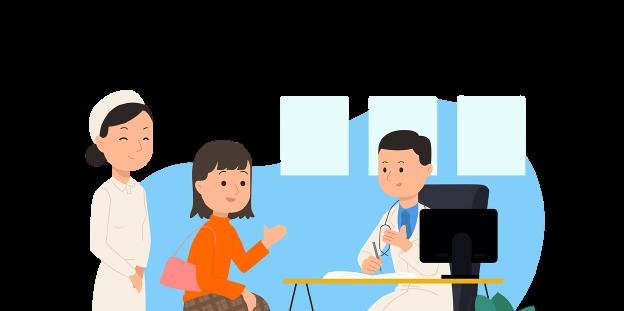 PHOTO BY PIXABAY
PHOTO BY PIXABAY
When a female-presenting patient goes to their doctor with their complaints, are those complaints being taken seriously?"
“
OPinion:
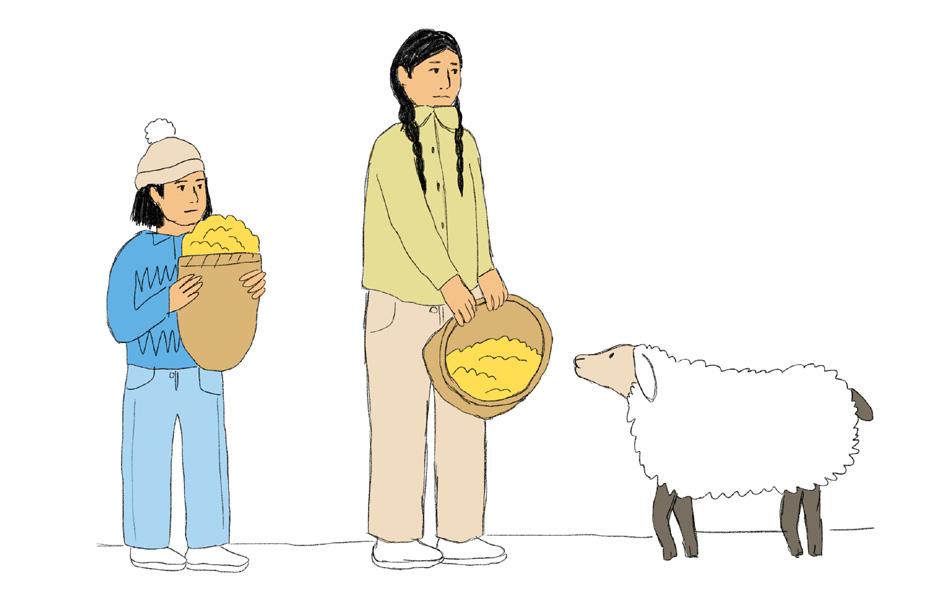 BY CATRIN ZHARYY, BEHAVIORAL NEUROSCIENCE, 2023 DESIGN BY PARKER HITT, BIOLOGY, 2024
BY CATRIN ZHARYY, BEHAVIORAL NEUROSCIENCE, 2023 DESIGN BY PARKER HITT, BIOLOGY, 2024
The historical and current exploitation of resources, systemic oppression, and forced assimilation that has been part of the colonization of indigenous homelands have taken an enormous toll on the health of indigenous communities around the world. Today, modern healthcare in colonized lands is not fulfilling its responsibilities to provide indigenous people with equal access to culturally-appropriate healthcare or to support their efforts to psychologically heal from colonialism.
Some of the major factors affecting indigenous mental health today are: intergenerational trauma, financial hardship and economic marginalization, poor physical health, suppression of culture and language, and continued discrimination. A study by Suzanne Stewart at the University of Toronto found that there are disproportionately high rates of mental health problems in Native communities in Canada. Stewart, who investigated Native counselors’ (from First Nations and Métis communities) perspectives on mental health care, found that “healing from colonialism is a major mental health issue for Native clients today.”
Each culture faces unique health challenges, whether they are based in biology, environment, lifestyle, historical challenges, or modern socioeconomic conditions. On top of this, each culture has developed different understandings of what factors affect each aspect of one’s health and different methods of healing. The brain’s circuits are sculpted by its environmental influences, including culture, and will most easily understand and respond to culturally-specific methodologies.
Culturally-relevant mental health care is not only a health issue; it is a social justice issue. Jerome Wright and Janaka Jayawickrama at the University of York suggest that Westernled international health organizations sidelining indigenous traditions in favor of promoting biomedical treatments is a form of modern colonialism. In the 2006 book “Healing the Soul Wound: Counseling with American Indians and other Native Peoples,” Native American psychologist Eduardo Duran agrees, asserting that “The therapist’s insistence on imposing a different worldview on the patient can be understood as a form of violence against the patient’s knowledge life-world.”
Past research about some indigenous communities around the world can teach us about different perspectives of and needs in health care.
Adequate mental health care for indigenous people — or anyone, for that matter — requires a concerted effort to understand the patient’s culture, view of health, and lifestyle in order for communication with the health care practitioner and treatment strategies to be effective.
The dominance of the Western biomedical framework in colonized lands and global health care initiatives has largely disregarded indigenous peoples’ own tenets of wellness. The Western view of health care centers the individual, revolving around diagnosis, medication, and hospitalization. It also separates the care of different kinds of health among different specialists and treatments, prioritizes physical health, and sees the patient’s sociocultural context as irrelevant to the methods of treatment.

Interviews with five counselors (First Nations and Métis) who worked for an indigenous community health agency in Canada revealed that finding or strengthening one’s cultural identity as well as being part of and having interdependent relationships within a Native community were some of the most important factors for the mental health and healing of their patients. Equally important was taking a holistic approach to health, meaning equally caring for a patient’s physical, emotional, mental, and spiritual health using diverse methods and resources.
A similar study based on interviews with First Nations elders and traditional healers learned that “each person seeking traditional healing receives individualized traditional healing practices to meet their needs,” which differs from the Western practice of typically recommending the same treatment to all who receive the same diagnosis.
The leaders interviewed also expressed an interest in learning about brain injury detection and treatment from the Western perspective and integrating indigenous and Western theories and methods in the treatment of people with brain injuries. Though, it is important to respect that people part
Why it is critical to look outside of the Western biomedical framework
What
of the same indigenous community may have very different ideas about what they desire from mental health care and how much involvement with Western health professionals they are comfortable with.
In New Zealand, Māori psychiatrist and professor Hinemoa Elder explored the beliefs of indigenous Māori people regarding the treatment of traumatic brain injury in children and young adults. Discussions in traditional Māori meeting houses in remote, rural, and urban environments around New Zealand showed that spirituality, the support of whānau (extended family), and connection to identity through place and community are highly important for healing. Māori people believe that a traumatic brain injury constitutes an injury to the patient’s wairua, or spiritual connection to the universe, and that it triggers memories of past traumas. By impacting the patient’s wairua, the injury activates ancestral knowledge, beliefs, and practices that can aid in the healing process. It also makes an imprint on the patient’s genealogy, which will be passed down.
In much of sub-Saharan Africa, including southern Malawi where Wright and Jayawickrama worked, the ancient African philosophy and value system of Umunthu guides beliefs about mental well-being. The word Umunthu comes from a Zulu saying, “Umuntu Ngumuntu Ngabantu,” which means “a person is a person because of, or through others.” Umunthu is manifested in daily life through viewing the experience and well-being of the individual as inextricable from the experience of the collective. Malawians believe that a mental disorder perturbs the Umunthu that lives within each person; in other words, the affliction causes a fracture in the individual’s connection with their community, which a traditional healer must remedy.

In Australia, a team from the University of Queensland and James Cook University learned that due to the significance of family and culture for group well-being among Aboriginals, there is a widespread grief for and fear of loss of family “seen through the impact of the stolen generations, suicide, early death, and incarceration.” The stolen generations were Aboriginal and Torres Strait Islander children who were forcibly taken from their families between 1910 and the 1970s. Similar institutions — known as residential schools — were present in Canada from 1883 to the late 1990s and in the U.S. from 1819 to 1969. (This was at least when the federally-supported institutions existed.) These “schools” removed children from their homes to assimilate them through abusive means. Aboriginals also express an acute sense of loss of community through diminishing traditions and spirituality brought on by colonization and continuing government policies.
A program or policy doesn’t have to have the exclusive or even main goal of improving indigenous mental health in order to be effective in this regard. Unfaltering recognition of an indigenous population’s culture and land and of the harms
Journal of Neurology Research (2022). DOI: 10.14740/jnr708
Canadian Journal of Neurological Sciences (2021). DOI: 10.1017/cjn.2021.501
Culture, Medicine, and Psychiatry (2021). DOI: 10.1007/s11013-020-09692-4
Qualitative Social Work (2021). DOI: 10.1177/1473325020932374
Nature (2019). DOI: 10.1038/d41586-019-01948-3
Canada's Residential Schools: The History, Part 1 (2015). ISBN: 978-0-7735-4649-3
Brain Impairment (2013). DOI: 10.1017/BrImp.2013.28
Canadian Journal of Occupational Therapy (2011). DOI: 10.2182/cjot.2011.78.4.5
the colonizer society has caused should be an obvious guiding principle of a nation’s government — following it can have a great impact on an indigenous community’s welfare even though it is not health-related on its surface. The livelihood of the Sámi people of northeastern Europe revolves around reindeer herding, so a program that works to improve the conditions of the practice could also have a great impact on Sámi wellbeing. A government can also indirectly support indigenous mental health by subsidizing traditional healers just as they do biomedical health workers.
In order to incorporate culturally-appropriate mental health care for indigenous populations into Western medical systems, ethical research and collaboration with indigenous groups is needed.
Researchers should use methods that, as much as possible, reduce their biases during data collection and interpretation. Incorporating participants in the synthesis and analysis of data can further ensure that the researchers correctly understood them and will relay credible information to the scientific community in their writings. Listening to participant needs and wants, keeping promises, and maintaining a relationship are key to a trusting and sustainable collaboration between researchers and the cultures they work with. Indigenous groups may be wary of someone from the majority culture entering the home of or trying to gain information from them for their own supposed “benefit” if they or their ancestors have been lied to in similar situations throughout history.
What would go a long way to support reciprocal learning between Western researchers and indigenous communities would be the creation of more opportunities and funding for indigenous researchers. Another perspective to consider is that a formal Western research study is not necessary to validate indigenous methods of healing.
To support indigenous health, majority cultures in colonized regions should work to destigmatize traditional methods of healing and support indigenous healthcare initiatives, including financially. People of all cultures can greatly benefit from culturally-informed methods of treatment, and the more cultures from which we learn traditional methods of healing the mind and brain, the more avenues of improvement patients of all cultures stand to gain.
EXPLORE: The Journal of Science & Healing (2009). DOI: 10.1016/j.explore.2008.10.003
Australian & New Zealand Journal of Psychiatry (2008). DOI: 10.1080/00048670701332953
International Journal of Health Promotion and Education (2008). DOI: 10.1080/14635240.2008.10708129
Healing the soul wound: Counseling with American Indians and other native peoples (2006). ISBN: 0-8077-4690-8
Science has always moved in cycles. This can be observed with the seismic shifts that have governed science’s arrow of progress. Whether it be the Industrial Revolution or Darwin’s theory of evolution, these disruptions have set science on a new path. However, it appears these eruptions have been eroded, with the amount of these disruptions experiencing a significant decrease. In one sense, this may seem strange considering the abundance of technological progress that has come out of just the past 20 years. Yet, just because there is development does not necessarily mean it is disruptive or innovative.
A paper authored by researchers from the University of Minnesota and the University of Arizona attempts to measure and find the extent of this phenomenon. First, the researchers point to some evidence showing the slowdown of innovative activity. These factors include studies documenting declines in productivity in the fields of semiconductors and pharmaceuticals, fields whose trends can extend to other areas; papers and patents being less likely to connect different fields of knowledge show areas are only sticking to conventionally used knowledge. An increasing gap between the year of discovery and awarding of the Nobel Prize suggests that past research has made more of a mark at its time.
Researchers explain possible causes for the slowdown with one theory stating that the “low-hanging fruit” or most available innovations have already been made or discovered, and therefore the number of innovations left is substantially lower. Another theory states that the burden of knowledge for scientists has grown substantially, meaning that the amount of training before one can begin to publish innovative research is higher than ever. Despite these theories, the researchers state that much is unknown. For example, it is unknown if the slowdown is occurring in only certain fields or just a few individual fields. Also, it is unknown whether overall markers of the trend conceal individual innovation. To solve this, the researchers used a citation-based textual analysis involving 25 million papers and 3.9 million patents to observe science’s change in disruptiveness.
To create their methodology, the researchers rely on the impact of individual papers. Some papers cement scientific progress, while others disrupt it. In this sense, a paper can be important, but not necessarily disruptive. To rectify this, the authors reason that if a paper is disruptive, then subsequent
work will be less likely to cite its predecessors. For example, a modern paper about DNA would most likely cite James Watson and Francis Crick’s paper about the double helix but would be less likely to cite Linus Pauling’s paper about the triple helix due to the disruptive nature of the former paper.
To quantize this phenomenon, the researchers created the CD index, which used an equation to model if a paper causes its predecessors to have fewer citations over a period of five years. In this sense, a paper with a high CD index would have more subsequent papers citing it as opposed to its predecessors, and vice versa for a paper with a low CD index. Besides just the CD index, the researchers measured disruptiveness in terms of linguistic change, or new words introduced. In terms of the CD index, the changes were drastic. While the CD index previously trended towards the mid-ranges, it dropped to almost zero. This means that papers went from almost always causing their predecessors to gain fewer citations to papers being cited moderately while their predecessors continued to rack up the majority of citations. In terms of language diversity, both papers and patents experienced large decreases, meaning they stick to only featuring the same few words.
In examining these results, the authors came to the conclusion that researchers are using narrower portions of knowledge and concentrating on a few specific areas. The researchers also dismiss the “low-hanging fruit” hypothesis, believing that easy discoveries wouldn’t be weeded out at similar rates in different fields. Another possible explanation is that the current state of academia is actively stifling disruptive research, instead producing repetitive research due to an increase in professional academics attempting to preserve their jobs.
Regardless of the reason, the trend described in this paper is concerning to scientists. Although technology continues to advance rapidly, these advances have the potential to slow down if the disruptiveness in science continues to decrease. As important as building on the past is, disruption allows scientists to examine what they know from a fresh perspective and achieve results never thought possible.
The dark ages of the modern era, more commonly known as the COVID-19 lockdown, proved to be a challenging period for many. As inherently social and stimulationaddicted creatures, it is against our nature to stay inside for months at a time. Nonetheless, we emerged to see the light — except the “light” was more like a harsh morning glare after a long, deep slumber. Our brains, as excited as they were, needed a minute to adjust. Adolescents, in particular, felt the brunt of this harsh awakening in the context of neurodevelopment; until the age of 25, the brain develops and undergoes morphological changes that are influenced by external factors. Thus, lockdown had profound effects on adolescents’ behavioral development, notably in social, emotional, and academic contexts.
Adolescence is a critical period of neurodevelopment from the onset of puberty to adulthood. In typical circumstances, the adolescent brain undergoes higher-order cognitive development that leads to behavioral maturity. Peak dopamine levels coupled with increasing social autonomy motivate sensation-seeking and risk-taking behaviors, and consequent exposure to novel and complex social and sensory experiences. In turn, these experiences induce plasticity in brain areas called association cortices, which integrate multimodal sensory information and relay it to the prefrontal cortex for higher-order cognitive processing. Neuropsychological outcomes of this critical period include increased working memory consolidation, attention span, resilience, and social and emotional skills, as well as reduced impulsivity.
Social isolation and online school brought on by the lockdown severely limited opportunities to engage in the novel and complex social and sensory experiences necessary to drive plasticity in adolescent brain areas responsible for higherorder cognition. To reconcile this lack of input with continued development, adolescents’ brains likely merged previous social and sensory experiences with whatever limited social and sensory exposure was available (e.g social media, television, Zoom interactions) and consequently fast-tracked neurodevelopment. A study published in December 2022 described the associated neurobiological implications. It showed that post-lockdown adolescents displayed accelerated brain maturation, which was characterized by decreased cortical thickness and larger
hippocampal and amygdala volumes. According to prior research, accelerated brain maturation is also seen in adolescents who have experienced adversity in their childhoods.
On a psychosocial level, post-lockdown adolescents lacked improvement in resilience and social and emotional skills and were thus faced with a myriad of issues in understanding their emotions and connecting with others. Additionally, they exhibit decreased working memory consolidation and attention spans. In an academic setting, this manifests in difficulty retaining information and consequent decreases in performance. Further, adolescents experienced significantly worse mental health issues, including anxiety and depression. In fact, the U.S. emerged from lockdown to a prevailing youth mental health crisis.
Although frightening, adolescent neurodevelopment is not a lost cause; there are ways to compensate for accelerated brain maturation and social and emotional developmental delays. First, it is important to get as much exposure to social situations as possible by meeting new people in new environments (e.g. joining clubs, forming study groups, picking up hobbies, traveling). This is especially important for adolescents that missed months of college. As for improving academic performance, engaging multiple senses when learning new information triggers signaling circuitry of the association cortices and engages more of the brain at once. This drives plasticity critical for higher-order cognitive development, including working memory consolidation and increased attention span. A few ways of engaging multiple senses simultaneously include writing with a pencil to feel the texture of graphite on paper, drawing pictures, and studying with peers face-to-face. Generally, taking part in as many novel social and sensory activities as possible will engage the signaling circuitry necessary to develop higher-order brain structures.
Lockdown disconnected the world as we knew it, and the profound effects on the human brain are only beginning to be revealed. To adapt to life after lockdown, it is important to recognize and understand these effects on ourselves and those around us and counteract them; only then will we fully emerge from the shadows of lockdown and learn to face the light without wincing.

Specialized and high-quality education is a hardearned privilege, not a necessity. Here in the United States, there are many examples of barriers that have prevented students from enjoying hands-on opportunities to grasp valuable knowledge from a young age. Racial discrimination, poverty, and other disparities all represent prominent problems when it comes to providing kids with proper education. Defining “proper education” can be tricky; however, early exposure to career-based expertise has been deemed essential in determining a child’s success. Introducing kids to various career options and teaching them the importance of what they are learning helps them to “dream big.”
This idea of providing early career opportunities to young students is especially evident in STEM-based fields. Many factors of a STEM-based career like the competitive atmosphere and challenging coursework may lead someone to avoid one altogether rather than pursue it. However, Harvard Medical School (HMS) is helping to bring down some of these bridges. Instead of depending on the assumptions and rumors of health careers, students can experience it themselves. Through the Harvard MEDScience Program, the school hopes to provide high school students with a glimpse of the medical world. It focuses on bringing teenagers from Boston and beyond to experience clinical and lab case scenarios. No matter who they are or where they have been, the students can experience something unique, an early gateway into hands-on clinical techniques and solving cases as if they were standing in the emergency room itself. The process often involves interacting with mannequins, diagnosing symptoms of certain diseases, and allowing the students to work together as if they were a real medical team helping to solve problems for patients in need. By providing this valuable opportunity for students, HMS is helping to provide rare early exposure to aspiring health professionals. In addition, it inspires those to be the representation desperately needed in the medical world by inviting a diverse selection of students to the program.
Recently, the program has shifted its curriculum and decided to launch a forensic science course, which emphasizes the integration of medicine in fields where it may not be expected. Forensic science is a field of science one might be aware of due to shows like 'Criminal Minds' and 'CSI: Crime Scene Investigation.' But there is more to forensic science
than the dramatic questioning and mysterious unsolved cases. There are a plethora of subfields in forensics that are rarely uncovered by audiences of shows. Forensic science is defined by the American Academy of Forensic Science as a science relevant to law. Thus, it is a branch of science that often uses its discoveries in civil and criminal court cases.
The HMS curriculum provides students with an immersive experience. This includes taking on many roles, like being the scientist working in a laboratory to discover the suspects, the medical examiner to collect evidence from the patients, and the detective to solve the case. While students are in the laboratory, they conduct techniques such as pipetting, DNA fingerprint recognition, gel electrophoresis, ELISA assays, and more skills one usually isn’t exposed to before college. While in the role of the medical examiner, the students are involved in the storyline aspect of the course by interacting with the patients themselves. This includes talking to patients and not only solving their medical emergencies by reading vitals, conducting physical exams, and conducting treatment plans but also by interviewing them about the crime that has been committed. This involves going to the scene of the crime and collecting evidence they will then use in the laboratory. By talking to the patient and suspects, they are applying clinical and interviewing skills not often found in a traditional classroom setting. Thus the program offers a rare opportunity for students to have an early exploration of the world of forensic science.
HMS MedScience thus tries to bring more awareness of how there is a multitude of subdivisions in medicine for students to explore. By allowing students to play the role of a medical examiner, students are allowed to explore careers in medicine that many may not traditionally think of when deciding on a specialty. Though other programs in universities like Wellesley College try to introduce students to forensic science, HMS MedScience takes a different route in providing the clinical, laboratory, and field experience that it takes to participate in medical forensic science, standing out from other programs set before theirs.
PHOTOS BY PIXABAYThis past December, the largest education strike in U.S. history ended after nearly six weeks of protesting as academic employees at the University of California approved new contracts. The striking workers, represented by the United Auto Workers, largely consisted of graduate student researchers and student employees working as teaching assistants, graders, and tutors. Highlights of the newly ratified agreement include wage increases of up to 80% and upgraded healthcare, childcare, and transportation benefits. These needs of workers, recognized by the agreement, have historically been neglected in higher education.
Rising living costs in the state of California played a major role in the strike. The union specifically demanded that the university consider wage compensation in the context of campus-area housing costs, such that employees would be able to afford to live there. The final deal includes a twoyear wage increase period, with higher pay scales for those employed at campuses in Los Angeles, Berkeley, and San Francisco. Through this deal, starting salaries for graduate student researchers and teaching assistants will rise from around $22,000–$24,000 to around $34,000–$36,500 depending on the cost of living on their campus. However, opponents of the contract assert that the proposed pay rates do not cover living costs in these cities nor do they approve of the extended increase period. After the tentative agreement was announced, some union members voiced these concerns among others during a weeklong opposition campaign in hopes of reaching a more favorable deal, but the initially-proposed agreement was ratified without change.
In 2022, 15 academic strikes occurred on U.S. university campuses, signifying that changes in higher education employment are due. Longstanding public disinvestment in higher education has decreased tenured professorships and promoted reliance on graduate student workers to teach courses. Risa Leiberwitz, general counsel for the American Association of University Professors, attributes the recent growth in unionization and strikes to the economic exploitation of workers colleges have facilitated by reducing secure, tenured positions and increasing underpaid faculty positions that lack job security. The rise in labor strikes on college campuses is also part of a post-pandemic strike wave across the U.S. economy. According to Bloomberg Law, union work stoppages hit a 17-year peak in 2023, which may indicate that the COVID-19 pandemic has led people to reconsider what working conditions they are willing to tolerate in a job.
Student researchers and employees are the backbones of research and education at higher education institutions, says Rafael Jaime — a doctoral candidate at the University of California, Los Angeles, and the president of the United Auto Workers branch for University of California student workers — in a recent statement. Jaime emphasizes that universities must support their workers, especially those who are part of marginalized groups, and believes the contract agreement will improve the quality of life for all academic employees at the University of California. As the strike wave continues to spread, salary increases and more comprehensive benefits could reside in the near future for academic workers across the country.
Longstanding public disinvestment in higher education has decreased tenured professorships and promoted reliance on graduate student workers to teach courses.”
Becoming a parent can be one of the most rewarding experiences in life. However, parenting is a physically and financially daunting task that requires careful planning to ensure that a child is safe and will have an enriching life socially, physically, and mentally.
Despite careful planning, children are at risk for a host of developmental disorders. According to the Autism and Developmental Disabilities Monitoring Network, one in every 54 children are on the autism spectrum. In recent years, the rates of autism detection among children ages 5–17 have increased upwards of 2.3% to 2.9%. With diagnostic methods improving over the years, it is essential for parents to be aware that their child may have a different developmental path. One main issue of the current assessment methods is that the age at which parents can access these evaluations for their children is often after their critical period of treatment.
As a pioneer in developmental neuropsychology research, Dr. Renée Lajiness-O’Neill of Eastern Michigan University noticed that many children could be identified as at risk for a disorder much earlier than the conventional 4-5 years. An earlier intervention potentially yields much-improved developmental outcomes for children compared to their later-diagnosed counterparts.
According to Dr. Lajiness-O’Neill, “The critical period for autism treatment is the time within preschool age.” This leads to the fact that “Early detection … can lead to early treatment, which has been shown to improve later language and cognitive abilities and ameliorate … core symptoms.” With access to conventional methods resulting in children potentially missing the critical intervention period, Dr. Lajiness-O'Neil and her team wanted to assess children and their development at their earliest stages.
Recognizing the need to identify neurodevelopmental risks quickly and in a cost-efficient manner, the team decided to begin a development method that has groundbreaking implications, PediaTrac. PediaTrac is a web-based caregiver report method that assesses children in infancy and toddlerhood. By monitoring their speech, motor, and social skills, as well as their sleeping and eating patterns, similar to how a doctor tracks weight and height, the model is able to examine trajectories of change in development in children. Needing to be easily accessible around the world, this method could be implemented online in remote locations where medical attention is scarce. A survey first prompts
caregivers with questions during critical developmental periods. The team then uses item response theory, a test construction method that uses mathematical modeling to estimate the child’s ability along a continuum (for example, motor skills), and predictive analytics to identify the child’s developmental and risk status. The team is hoping to expand PediaTrac to include computer adaptive testing (CAT) methods, for which the survey will learn and prompt questions individually based on the child’s developmental status over time.
Being able to collect data at multiple points in a child’s early development helps Dr. Lajiness-O’Neill and her team visualize their growth in a longitudinal manner. Conventional developmental assessments are done in a segmented manner, with information being collected and analyzed at that point in time. With height and weight data being collected in a longitudinal manner, one is able to examine the trajectory of growth over time and analyze the overall growth of the child with multiple points of data. Dr. Lajiness-O’Neill and her team are attempting to apply these methods to other areas of developmental assessment. With the average age of diagnosis for autism ranging between 38 and 120 months, being able to effectively model and predict risk for a diagnosis well before this range can be key in helping a child live their life to their fullest potential.
Following a cohort of newborn babies consisting of 331 term babies and 240 pre-term babies, Dr. Lajiness-O’Neill and her team tested out PediaTrac’s motor domain to assess its efficacy. In addition to the model’s evaluation, the infants underwent direct assessment by professionals to further test PediaTrac’s predictive potential. With PediaTrac, Dr. Lajiness-O’Neill’s team was able to “provide a reliable estimate of the … motor ability during the newborn period” based on caregiver reports and identified risk statuses from the model. With PediaTrac being able to successfully support the early identification of at-risk infants, the implications are monumental. Being an online, not-for-profit service, hospitals around the world can access this revolutionary technology. Its virtual capability allows for the creation of the first-ever repository of normal development data for infants and toddlers that are not bound to just height and weight measurements. Dr. Lajiness-O’Neill and her team’s generosity and ingenuity with the creation and development of PediaTrac can help millions of people find the resources they need and obtain the best quality of life they deserve.

















 BY EVELYN MILAVSKY, CELL & MOLECULAR BIOLOGY, 2025 DESIGN BY PARKER HITT, BIOLOGY, 2023
BY EVELYN MILAVSKY, CELL & MOLECULAR BIOLOGY, 2025 DESIGN BY PARKER HITT, BIOLOGY, 2023
The possible inheritance of unfavorable genetics sits in the front of many new and soon-to-be parents’ minds. Though it may seem comforting to know if one’s child carries the risk of developing certain conditions in adulthood, is it in the best interest of the child to grow up with this knowledge? This burden poses an ethical dilemma in genetic testing through undue mental strain on both children and parents, as well as potential misuse for the benefit of individuals other than the children themselves.
The American Academy of Pediatrics and the American College of Medical Genetics do not recommend genetic testing for adult-onset conditions for individuals younger than 18 years old. The complexities of disease risk are difficult to understand at all ages, but particularly so for children. Without the cognitive abilities to differentiate a possibility from a certainty, children informed that they carry a potentially dangerous gene may believe that they will inevitably develop that condition. For example, female inheritors of the Brac1 gene variant have a 55%–72% likelihood of having breast cancer during their lifetime. Though this is a legitimate concern for the individual’s future, a cancer diagnosis is not inevitable and, more importantly, is unlikely in childhood seeing as breast cancer is an adult-onset disease. There is little benefit to telling a child they may develop cancer if they are unable to address the issue until adulthood. In addition, this knowledge may weigh on parents who are likewise unable to act on the test results, thus it is not beneficial to receive genetic screening for this gene and similar ones as a child.
Ethical concerns about childhood genetic testing came to the forefront after the completion of the BabySeq Project by the National Institutes of Health. The study aimed to sequence the genomes of newborns and infants to identify the practicality of completing sequencing as common practice in postpartum care. However, researchers in the study noticed that they felt compelled to share genetic information with parents not only out of concern for the child but also to identify the parents as potentially having harmful mutations

as well. Therefore, the children’s genomic information was being utilized as a healthcare resource for both themselves and others. In acknowledgment of this possibility, the study was redesigned to require parents to explicitly opt into testing their children for adult-onset conditions. Contributors to the BabySeq Project have stated that this usage of genetic information is ultimately beneficial to the children by positively supporting parental health. However, children are not legally or ethically obligated to act as a tool for their parents’ health. The permittance of pediatric genetic testing opens the door to an abuse of power on the part of relatives and blatantly ignores the child’s right to consent to receiving and acting on this information as an adult. The study of adult-onset diseases in children’s genomes fails to prioritize patients’ medical autonomy and mental burden in the event of high mutation risk.
Pediatric genetic screening for conditions affecting primarily the adult population is controversial due to its ability to cause emotional harm to developing families and its capacity to take advantage of genomic data to benefit other parties. Maintaining ethical limits on genetic testing would allow children to avoid inappropriately preemptive information regarding adult-onset conditions, while also preventing the use of their genetic composition as a means to promote the health of another person. When asking ourselves whether children should know about their future genetic possibilities or whether their DNA should be used to clarify the risks of others, we should be asking a simple question: does this testing ultimately benefit the child at this moment? Through this lens, children are not obligated to carry the burden of their potential risks or those of others on their shoulders, and an effective healthcare system should not prescribe this false obligation to the detriment of patients.
Pediatrics (2019). DOI: 10.1542/peds.2019-1031
Pediatrics (2013). DOI: 10.1542/peds.2012-3680
After waking up from surgery, we tend to focus on if it was successful, if there is any pain, or if we embarrassed ourselves in front of the doctors. We rarely ask questions about the anesthesia used to put us under. Common surgeries and procedures ranging from root canals to childbirth use forms of anesthesia to reduce patient pain. No doubt anesthesia has been a large part of advancing treatment; without it, patients would shy away from treatment or be at risk while on the table. Regardless of use, is it safe? And for whom?
Cocktail therapy or not, anesthesia is a collection of medications, appropriately called anesthetics, that cause sedation or numbness. Anesthesia can be given in various ways: locally, generally, or spinally, with each kind affecting a larger area faster than the last. When administered locally, anesthetics are more numbing than sedating. Operations like root canals use local anesthetics, commonly Novocain, to numb the gum area. Five to ten minutes post-injection, the subcutaneous tissue will numb for under an hour and any pain signals in that area will be blocked from reaching your brain and creating an emotional response. Though a similar mechanism, general anesthesia leaves you unconscious which keeps your heart rate steady and blood loss controlled. Spinal anesthetics are injected directly into the cerebrospinal fluid, such as epidurals given during childbirth.
much? The phenomenon of perioperative delirium highlights the experience of patients — particularly older than 60 — experiencing lingering, disruptive effects due to anesthesia.
One of the earliest records of anesthesia dates back to 13th century Europe when physicians and apothecaries would use opium or alcohol-soaked sponges. In the early 1800s, US soldiers were still being given bullets to bite down on to undergo amputation. It wasn’t until 1846 at Massachusetts General Hospital that doctors William T. G. Morton and John Collins Warren used sulfuric ether to remove a tumor from a patient’s neck. Today, sulfuric ether has become outdated by anesthesiologists due to side effects such as spasms, mucosal membrane irritation, and smell.

Though sulfuric ether aged out, that doesn’t mean more modern mixtures are harmless. The kind of daze wisdom teeth extraction patients leave a clinic in has made for amusing videos, but what happens when a patient isn’t in the correct age group or is given too
A study conducted through the University of Massachusetts Medical School, led by current Northeastern professor Jane Saczynski, found that elderly patients have a higher risk of delirium after being discharged. Participants were evaluated based on memory, recall, and attention. Those with perioperative delirium took between six months to a full year to return to their normal cognitive capabilities. Their symptoms can be characterized by brain fog, lasting either days or years, which puts them at risk of developing neurodegenerative disorders or decreased capacity for physical function. Eighty-one-year-old Professor Susan Baker underwent vertebrate surgery and woke up stable the following day. Later on, she reported hallucinations of looming fires and forgetfulness of her location and situation. Patients with preexisting conditions are at an increased risk as well, specifically those with Alzheimer’s, Parkinson’s, or epilepsy. Seventy-six-yearold Parkinson’s patient Phil Horton delayed his knee replacement surgery because of past bouts of perioperative delirium where he reported haunting hallucinations and worsening tremors after a prior surgery. Ironically, the medicine used to spare him pain was responsible for his fear. Researchers are more concerned with the levels of anesthesia over the kind given when it comes to causing delirium. Some experts hypothesize that the brain may have trouble reforming the connections between regions that have been “numbed” during anesthesia. Since most anesthetic agents are inhaled, they directly affect the central nervous system and reduce neurotransmitter release at the synapse, which is essential for internal communication. Researchers at Duke University found that general anesthesia renders a patient unconscious by activating the supraoptic nucleus in the hypothalamus to release more of the hormone vasopressin.
These long-lasting fever dreams have begun to raise concerns in elderly patients, especially those with pre-existing conditions. Nearly 200 years have gone by since anesthesia replaced bullet biting, and the exact mechanisms are still unknown. With the rise of alternative therapies, public trust is being stretched as well. The acid trip provoked by psychedelics has been the center of recent clinical trials with the hopes of relieving mental illnesses like depression or post-surgical pain. Incorporating psychedelics into painkiller management will first require much more research surrounding anesthetics.
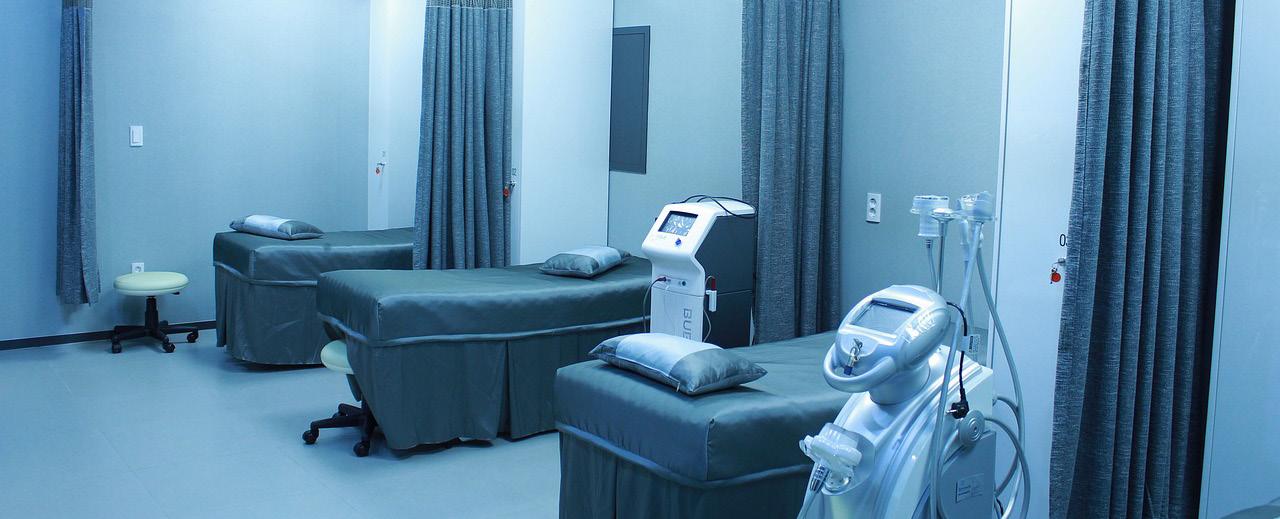
The medicine used to spare him pain was responsible for his fear. ”












The concept of normalcy is heavily relied upon within healthcare in order to classify and diagnose individuals who are deemed to be “abnormal.” However, the idea of abnormality may be heavily contributing to stigma within the clinical psychology field. Because of this concern, Northeastern renamed its “Abnormal Psychology” course. To discuss this topic, I sat down with Professor Kyle Gobrogge, a highly-cited behavioral neuroscientist and a professor in the Psychology and Behavioral Neuroscience departments at Northeastern University. In this conversation with Gobrogge, we discussed the role of language in destigmatizing brain health and, more specifically, the use of the term “abnormal” in the clinical psychology field.
The term “abnormal” originates from the Diagnostic and Statistical Manual of Mental Disorders, a manual published by the American Psychological Association, which provides criteria to diagnose psychological disorders using the classification of “abnormal” behavior. While normal behavior refers to behavior that is typical and expected within a given cultural and societal context, abnormal behavior refers to behavior that deviates from these norms and may be indicative of a mental disorder or other psychological issues. The determination of what is considered normal or abnormal behavior may vary based on factors such as cultural and societal expectations, as well as the specific context in which the behavior is exhibited. In clinical psychology, abnormal behavior is typically defined by the presence of specific symptoms or behaviors associated with a particular mental disorder that causes significant distress in an individual’s life.
As clinical psychology has grown and brain health is becoming increasingly destigmatized, the term "abnormal behavior" and the general language surrounding brain health is being reconsidered. “This type of language does more harm than good despite its medical context,” Gobrogge said. “While abnormal is a useful term for physicians when considering the rest of the body, it is not appropriate for mental health because there is not yet neurological criteria for what actually is normal in the brain.”

Classifying those with psychological disorders as portraying “abnormal” behavior implies that there is something inherently wrong or deviant about that individual who exhibits such behavior. However, the concept of abnormal behavior is often based on societal norms and expectations, rather than on any objective criteria. This means that what is considered abnormal can vary widely across cultures and contexts, and may be influenced by prejudice, discrimination, and bias. It is important to note that “abnormal” behavior is not equivalent to bad behavior, and it does not reflect anything about an individual’s character.
Gobrogge believes language is vital to destigmatizing psychological disorders and mental health. When referring to individuals, “using words such as ‘atypical’ and ‘neurodiverse’ are less heavily loaded terms,” he said.
These terms focus on the deviation from what is typical rather than implying that there is something wrong with a person. In promotion of this, the psychology course originally titled “Abnormal Psychology” at Northeastern University was renamed this semester to “Clinical Psychology and Mental Health” due to Gobrogge and other faculty’s advocation. This move echoes the American Psychological Association’s decision to change the title of their 115-year-old flagship journal from the Journal of Abnormal Psychology to the Journal of Psychopathology and Clinical Science in 2022.
“While labels of behavior and disorders are still important for treatment and insurance purposes, the medical description of a condition is a better alternative,” they said.
An example of this is the recent discovery of schizophrenia as an over-pruning disease of the brain that results in behavioral changes rather than solely a mental health disorder. Treating psychological disorders as the medical conditions and diseases they are can lead to social and medical destigmatization, which can increase support and funding of research on brain health. However, most psychological conditions don’t yet have a definitive underlying cause for their atypical behavioral effects. Gobrogge cites the main reason for the lack of neurological criteria for psychological disorders as simply, the lack of technology.
“The MRI and EKG were incredible advancements in medical technology that allowed for the diagnoses of a variety of medical conditions. Unfortunately, that type of technology doesn’t yet exist for brain conditions.”
It is important to destigmatize mental health and the field of clinical psychology as a whole in order to increase funding for research that may lead to the discovery of neurological criteria. This type of research could transform our understanding of brain health, psychological disorders, and how to best treat individuals. This is why changing course names from “Abnormal Psychology” to “Clinical Psychology and Mental Health” and using more accurate terms to classify symptomology like “atypical” are small, yet impactful actions that could potentially revolutionize the brain as we know it.
As far as diseases go, few are met with more interest and concern than cancer. Cancers are the second leading cause of death in the US, and the subject of an immense body of research. Treatments for cancer are notoriously hard on the body, and in many cases can only delay the progression of the disease.
But what makes cancer so difficult to treat? Cancer is caused by rogue cells in the body that lose the ability to regulate their growth and reproduction. Rather than serving their biological function, these cells will rapidly and uncontrollably reproduce, consuming valuable space and resources. This type of illness is very difficult for the body to recognize and fight, as the harmful agent is composed of the body’s own cells.
For the same reasons, clinical treatments for cancer are also very difficult to develop. Procedures or medications that will harm the cancer cells are also generally harmful to the rest of the patient. A very delicate balance must be kept between eliminating the cancer and minimizing harm to the patient. Most successful treatments rely on exploiting the subtle differences between cancerous and healthy cells to preferentially eliminate the disease. By studying the ways cancer cells deviate from their healthy counterparts, scientists can help develop new ways to treat cancer while minimizing damage to the rest of the body.
One process that is of particular interest to researchers is metastasis. Metastasis refers to the spreading of cancerous cells outside of a localized tumor, resulting in cancerous growth throughout the body. This presents an enormous challenge for treatment, as doctors cannot simply remove the cancerous region. Metastasized cancer is associated with significantly higher mortality, resistance to treatment, and increased recurrence of cancer after treatment.
Researchers at Kings College in London have recently uncovered a mechanism through which skin cancer cells can migrate through tissue and out of a tumor. When moving through these regions, a cell must navigate through a
 DESIGN BY SAMADHI WIJETHUNGA, BEHAVIORAL NEUROSCIENCE, 2025
DESIGN BY SAMADHI WIJETHUNGA, BEHAVIORAL NEUROSCIENCE, 2025
network of cells and other components, often encountering constrictions smaller than the cell itself. While the outer membrane of the cell is usually flexible enough to fit through these constrictions, this ability is often limited by less flexible components in the cell, in particular the nucleus. The nucleus serves as storage for the cell’s genetic material and is vital to its ability to grow and reproduce. When the nucleus is subjected to large mechanical stresses during cell migration, it can burst, resulting in cell death.
However, in cases of metastatic melanoma, this limit is overcome, allowing cells to squeeze through dense tissue and invade other parts of the body. To further examine this mechanism, researchers constructed a system of increasingly small pores through which different cancer cells were allowed to migrate. By closely analyzing the cells before and after migration, they were able to determine how factors like cell death or structural change were affected by constrictions. Understanding these relationships is a key step toward understanding the specific differences between cancerous cells and healthy ones.
Through their experiments, the team found that a specific protein called LAP1 was strongly associated with increased cell survival after constriction. Cells with higher expression of that protein were able to adapt the shape of their nucleus to migrate through tight junctions. In addition to the laboratory experiments, the team also investigated melanoma cells taken from a set of patients. They found that the LAP1 protein was expressed at much higher levels in patients where metastatic spread was found. This confirmed their finding that this protein plays a key role in the ability of cells to migrate in the body.
These findings present a valuable new perspective on the cellular mechanics of melanoma. Through identifying specific molecules or interactions that differentiate cancerous cells from healthy cells, scientists hope to improve our ability to design more specific diagnostic and treatment capabilities. When it comes to curing cancer, the role of translational, exploratory research plays an increasingly important role.
Even after three long years, COVID-19 continues to sweep through the world’s population. Testing positive is detrimental to many, preventing those infected from going to work and providing for their family. With the effects of COVID-19, it is hard to imagine what having extended symptoms would be like. Recently, many have been reporting that they are experiencing long-term loss of smell. Though often overlooked, smell plays a big role in daily life. Smells can provoke distant memories, improve mood, and allow us to taste. Without smell, life — and food — seem bland; this is the life of some after getting COVID-19.
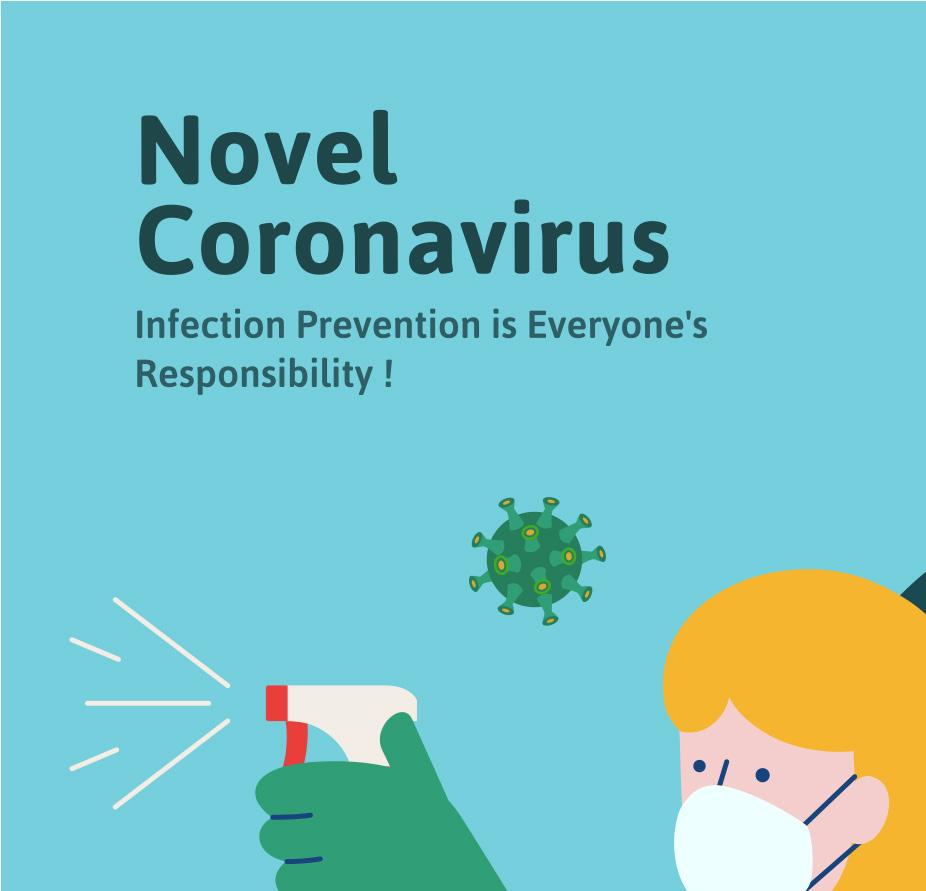
The symptoms of COVID-19 include fatigue, fever, shortness of breath, congestion, sore throat, and many more. One that many find concerning is a loss of smell. While many were able to regain their sense of smell as they recovered from their infection, some have reported long-term loss of smell. Reasons behind the prolonged symptom became the focus of researchers from Harvard Medical School, Duke Health, and the University of California, San Diego. In a recent study, they found that those with long-term loss of smell experience longterm immune responses in their olfactory (smell) nerve cells.
These teams of researchers found that the COVID-19 virus targeted olfactory sensory neurons. After an olfactory biopsy analysis where a collection of olfactory skin was examined, researchers found high numbers of T cells, a type of white blood cell that aids the immune system in fighting infections, in an inflammatory response despite no COVID-19 detection. The reason for the extended inflammatory response is unknown, though a potential justification is that it involves increased protection and repair of the skin barrier function. As a result, the researchers predicted that this long-term, ongoing inflammatory response is the cause of the decrease in olfactory sensory neurons, causing the long-term loss of smell.

There is still no definitive reason as to why some people experience long-term smell loss and others do not; however, there have been some hypothesized roots. These researchers produced three predictions: a lack of stem cell pools for skin repair, the

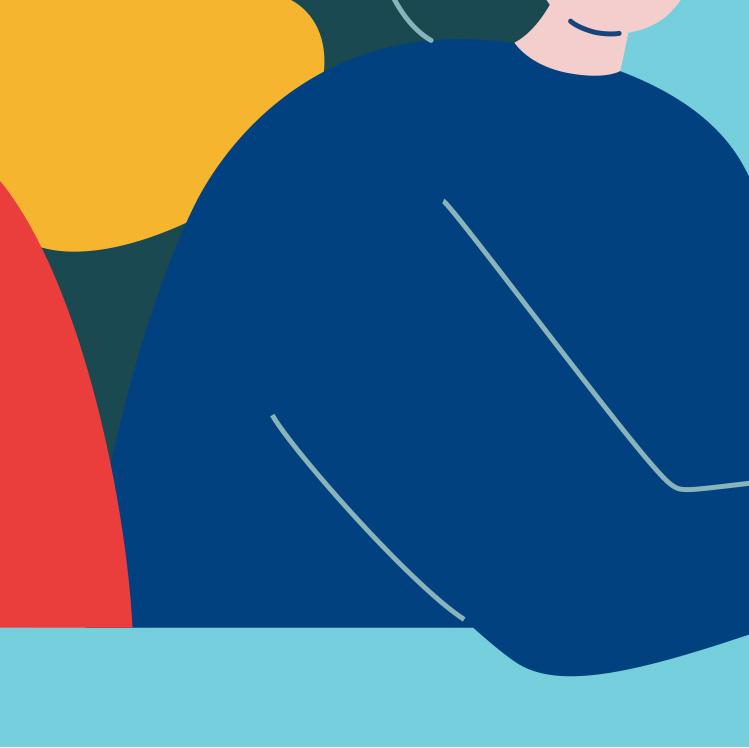
 BY ELIZABETH LUO, CELL & MOLECULAR BIOLOGY, 2026 DESIGN BY ANANYA JAIN, BEHAVIORAL NEUROSCIENCE, 2025
BY ELIZABETH LUO, CELL & MOLECULAR BIOLOGY, 2026 DESIGN BY ANANYA JAIN, BEHAVIORAL NEUROSCIENCE, 2025
overpopulation of T cells disrupting normal cell function, and changes to the olfactory cortex.
One, severe damage to the olfactory epithelium causes large numbers of stem cell pools to lessen. These stem cell pools allow the skin to renew following injury, so the lack of such cells would inhibit the regrowth of new olfactory epithelium and thus result in a loss of smell.
Two, the influx of T cells and other immune cell populations to the olfactory epithelium disturbs normal function of the cells through changes in gene expression. Long-term inflammatory responses are not healthy for cells and can lead to changes in the gene expression and possibly cell function. And three, there could be alterations to the gene expression in the olfactory bulbs or olfactory cortex. Such changes can be fatal to an individual’s sense of smell, as derangements of the neurons in the brain can result in a long-term loss of smell.
Such research and identification of what sites are damaged and what cell types are present is important in the development of medications. A growth of more individualized medications can arise, allowing people to receive treatment tailored to their needs. Additionally, these recent breakthroughs highlight a need for further research and treatments for those with a loss of olfactory function. With this knowledge, scientists can apply these understandings to other longterm COVID-19 symptoms like fatigue, shortness of breath, and brain fog in advancing treatment methods and therapeutic applications. Advances in the medicine will promote scientists and doctors to handle viruses like COVID-19 better, allowing people to live their most healthy lives.

These recent breakthroughs highlight a need for further research and treatments for those with a loss of olfactory function.”
Consider Eliza’s sleep schedule. Eliza is a college student, who sleeps six hours every day due to the constraints of her job, sports practice, and schoolwork. Trudging through the week, she looks forward to the weekend when she can sleep in late and trade her weekday 8 a.m. for a weekend 12 p.m. She’s excited to catch up on her sleep and finally feel well-rested.
Eliza’s situation is not unique, in fact, she is part of the 30% of Americans that get less than six hours of sleep every night. Many of us might fall into the trap of waiting until the weekend to make up for lost sleep, but is it truly possible to “catch up” on sleep in this way?
Sleep is an important determinant of health and quality of life. Adequate sleep is crucial to ensuring balance in the body, supporting immune and growth functions, as well as affecting alertness and memory. In various studies, less than six hours of sleep a night correlates with increased mortality rates and a higher rate of a host of diseases affecting nearly every part of the body.
Sleep debt is the term for inadequate sleep. Over the course of a week, sleep debt may be high, but with the added extra “catch-up” sleep over the weekend, sleep debt may be resolved mathematically. But what about physiologically?
If Eliza needs eight hours of sleep every day but gets six hours of sleep on weekdays and 13 hours on the weekends, her average sleep time is eight hours. But is this the same as getting eight hours every night, in a physical sense?
A meta-analysis of sleep study literature in 2017 sought
to understand just that — if individuals who sleep “catchup” have the same health outcomes as those who do not. The results were astonishing — short and inadequate sleep was heavily associated with negative health outcomes, most notably diabetes, hypertension, cardiovascular disease, and obesity. The study suggests that catch-up sleep does not erase these risks and is not a replacement for a good night’s rest.
A study done in a Korean medical college focused on the lifestyle of different sleepers was conducted in 2020. It surveyed over 4,500 individuals to understand the health of people who participated in catch-up sleep and those who did not, and if they had comparable qualities of life. In this study, it was found that weekday sleep debt and catch-up did not have an effect on motility and self-care. Participants from both groups displayed similar data. However, there was a significant difference between the participants in both categories in the areas of mental health and social functioning. These findings suggest that catching up on sleep on the weekends leads to a significant disruption in daily routines, resulting in missed social interactions and limited opportunities for building relationships, which may also contribute to decreased mental well-being.
It may be tempting to stay up an extra hour or two, but it’s not worth the negative impact it can have on physical and mental health. Instead of relying on the weekends to catch up on sleep like Eliza, make sure to prioritize getting enough sleep every day of the week.
CELL & MOLECULAR BIOLOGY, 2025"




 DESIGN BY VIANNA QUACH, PHARMACEUTICAL SCIENCE, 2025
DESIGN BY VIANNA QUACH, PHARMACEUTICAL SCIENCE, 2025
Almost everyone can recall a particularly weird nightmare they have had, ranging from being late to having an exam to being chased by a monster. They often leave us with feelings of anxiety, confusion, distress, and fear after waking up, wondering how our brains could have conjured such a narrative.











Nightmares are a natural product of the emotional processing and creativity of our brains. Just like dreams, nightmares tend to occur during rapid eye movement (REM) sleep, and the more vivid and memorable nightmares happen when the REM intervals lengthen about halfway through the sleep cycle as we prepare to wake up. Nightmares are sometimes confused with night terrors, which are sudden reactions that may happen during the transition between the deepest stages of non-REM sleep to REM sleep. A person can feel on edge after waking up, but unlike nightmares, there is no story or image to associate with the feeling.
There are a variety of factors that can cause nightmares. Michael Schredl, a sleep researcher at the Central Institute of Mental Health in Germany, found that daily stress is a strong contributor to nightmares. Generally, nightmares reflect what people are experiencing in real life, so worries about academics, jobs, or personal relationships are likely to manifest while sleeping. Nightmares can also be a consequence of an irregular sleep schedule due to mental disorders, like insomnia, or medications. Schredl also theorizes that nightmares may be a sign of our brains reinforcing the social code we follow. In a nightmare, you can either experience aggression, or you can be the aggressor, which both induce negative feelings. This experience can lead us to understand what actions have good and bad consequences and to apply that knowledge in real-life situations.
It’s normal to have nightmares every so often. The American Society of Sleep Medicine found that around 85% of people report having an occasional nightmare. However, some groups are more affected than others. Nightmares are more typical in children than adults because they are overall more vulnerable to threats and feelings of fear. Experiencing frequent nightmares as an adult may originate from trauma experienced during the “infantile amnesia” period of childhood, which lasts from birth to around three-and-a-half years old. At this stage, no lasting memories are formed unless the child encounters significant trauma that disrupts this period, which is a factor in the Stress Acceleration Hypothesis (SAH).
SAH encompasses the idea that early hardships can speed up the development of how to manage fear and crises, according to a paper by Tore Nielsen at the University of Montreal. This coping mechanism is helpful in the short term but can lead to nightmares and other issues later in life. The trauma experienced does not have to be severe, either. A common instance is the birth of a sibling because it takes away the sole attention and care of the parents from the first child. Nielsen reported that firstborn children have nightmares more than twice as frequently as the youngest child, regardless of other factors.
Most notably, chronic nightmares are a prominent symptom of post-traumatic stress disorder (PTSD). In a study by Brant Hasler and Anne Germain at the University of Pittsburgh School of Medicine, 80% of people with PTSD reported having frequent nightmares. Post-traumatic nightmares draw from the source of trauma and often manifest as exact replays of the related incident. These nightmares can be especially impactful and graphic because the areas of the brain connected to the fear response, such as the amygdala, are overwhelmed due to hypersensitivity.


Several treatments exist for those who are more prone to nightmares. Stress management is an effective manner of reducing daily stressors that might plague nightmares. More serious treatments involve psychological therapy, especially for people dealing with PTSD. Image rehearsal therapy is a cognitive therapy that specifically targets repeated nightmares. People are asked to recall and record what they experience in their nightmares, and then they rewrite it with a more positive ending. Before they sleep, they rehearse the new version to shift the narrative with the goal of reducing the frequency of nightmares and the subsequent stress. There is also medication, like prazosin, that may help with PTSD-induced nightmares by lessening the level of neurochemicals in overstimulated pathways.
Nightmares are hard to escape, considering the combination of the stress in our daily lives and our overactive imaginations. The more we understand where they come from, the more we can rest easy at the end of the day.

 BY FIN LI, MARINE BIOLOGY, 2026
BY FIN LI, MARINE BIOLOGY, 2026
Visit the seafood section at any supermarket and you’ll see numerous salmon filets laid out on ice, recognizable by the bright, orange color of their flesh. Tasty and easy to cook at home, salmon has always been in high demand and seemingly in high supply too — although the seafood section hardly reveals the entire story. Take Atlantic salmon, for example. Known as the “king of fish,” the Atlantic salmon (Salmo salar) is an endangered species whose once glorious population now faces many threats. So how is it that we can easily buy Atlantic salmon at our local supermarkets? That’s because the filets we consume aren’t from wild Atlantic salmon, which no longer exist on a commercial level. Instead, they’re from farm-raised, domesticated salmon.
The domestication of salmon is a result of aquaculture, the controlled farming of fish and other aquatic organisms. It’s one of the fastestgrowing food production sectors, with Atlantic salmon representing the most economically significant aquaculture product. Even so, Atlantic salmon’s history of domestication began only about a half-century ago, in 1971, when Norwegian scientist Trygyve Gjedrem and his team created the first breeding program for salmon. They used directional selection to cultivate salmon with desirable production-related traits, mainly faster growth. Within seven generations (14 years), they doubled their salmon’s growth rate.
Since then, aquaculturists have been relentless in their pursuit of the most efficient domesticated salmon. One Massachusetts-based company, AquaBounty, has developed a genetically engineered salmon called AquAdvantage Salmon, which can be farmed year-round (instead of during only two seasons) and grows at a faster rate than other farmed salmon. This is because it has a growth hormone gene from Pacific Chinook salmon, which is activated by a genetic promoter sequence from the cold-tolerant ocean pout.
So while domesticated salmon are still the same species as their wild counterparts, they display significant phenotypic differences. Some scientists even refer to this strain as Salmo domesticus. In comparison to S. salar, S. domesticus have faster growth, delayed maturation, altered gene-transcription profiles, higher stress tolerance, and reduced predator awareness. Smaller eyes, too, as one international team of researchers found when examining Atlantic salmon from Norway and Ireland.
DESIGN BY AMANDA BELL, DATA SCIENCE & BEHAVIORAL NEUROSCIENCE, 2023



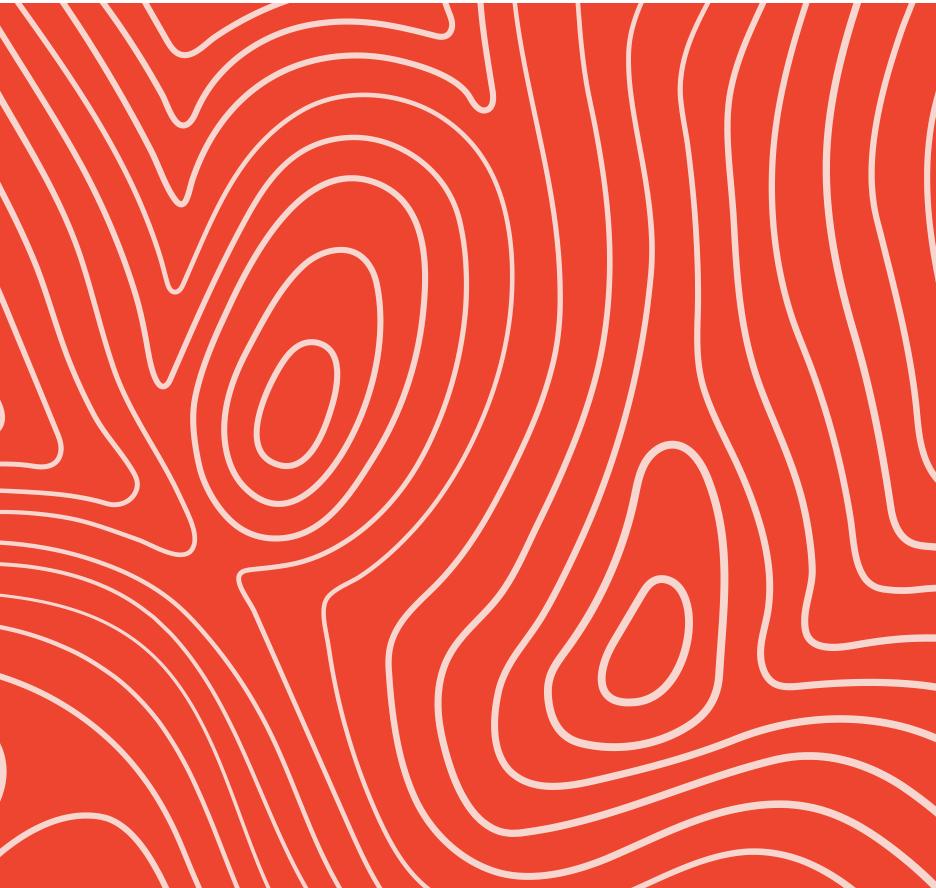

These traits make domesticated salmon unfit for survival in their natural environments. At first glance, this does not seem like a huge issue; domesticated salmon remain confined in their farms, while wild salmon remain elsewhere, right? Turns out they’re not that separate after all. Globally, millions of salmon escape from fish farms every year, making their way to natural environments where they interact ecologically and genetically with wild salmon, an issue that many studies have attempted to examine and quantify. Even though domesticated salmon do not thrive in the wild, their abundant presence is enough to cause introgression, in which the domesticated strain genetically mixes with the wild strain through breeding, passing on the former’s maladaptive traits. Instead of generations of pure wild salmon, scientists are seeing hybrids with lower survival rates that are threatening the genetic integrity, productivity, and evolutionary trajectories of the original populations. Aquaculture is supposed to allow wild fish populations to thrive by decreasing demand for wild-caught fish, yet our domesticated fish are invading their territories and gradually eliminating what we define as wild.
The introgression of escaped domesticated salmon in wild populations is only one of aquaculture’s many concerns. Once full of promises to lessen pressure on wild fish populations and aid humans in our fight against global hunger, aquaculture has revealed itself to be increasingly problematic and is in dire need of reformation in order to be sustainable and make good on its promises. Ultimately, like many controversial environmental issues, it begs a reexamination of our relationship with nature as consumers and producers. Have we gone too far in our attempts to control nature’s resources and animals? How much do we value the concept of a truly wild organism?
There is certainly something to be said about our treatment of the “king of fish” in particular. These days, the scarce memory of wild Atlantic salmon has been replaced by pounds of farmed Atlantic salmon at the supermarkets. This means little to your average consumer, since farmed salmon tastes the same as wild salmon, but what lies behind every orange slab of flesh is the complex and ongoing history of humans’ domestication of once-wild animals.
Evolutionary Applications (2022). DOI: 10.1111/eva.13375
Evolutionary Applications (2021). DOI: 10.1111/eva.13297
Scientific Reports (2020). DOI: 10.1038/s41598-020-58661-9
Four Fish: The Future of the Last Wild Food (2011). ISBN: 9780143119463
PHOTOS BY SHUTTERSTOCKOff the coast of mainland Australia, the small, sunbaked island of Tasmania houses nature’s most feral creature. With a piercing shriek, lingering stench, and penetrating eyes, the Tasmanian devil reigns as the largest carnivorous marsupial in wildlife. Its evergrowing teeth sink into bones and feast on the bloody, meaty flesh of its latest catch. As self-proclaimed “lone wolves,” Tasmanian devils hunt solo and are known to brawl with their own over prey. And yet, while being physically prepared for any possible attack, they are helpless under the restraint of an invisible predator that has eradicated more than 60% of their entire population. This silent assailant is a contagious cancer known as Tasmanian Devil Facial Tumor Disease (TDFTD). This disease defies what we thought we knew about cancer, and therefore is a topic of high interest for many genetic and conservation biologists.
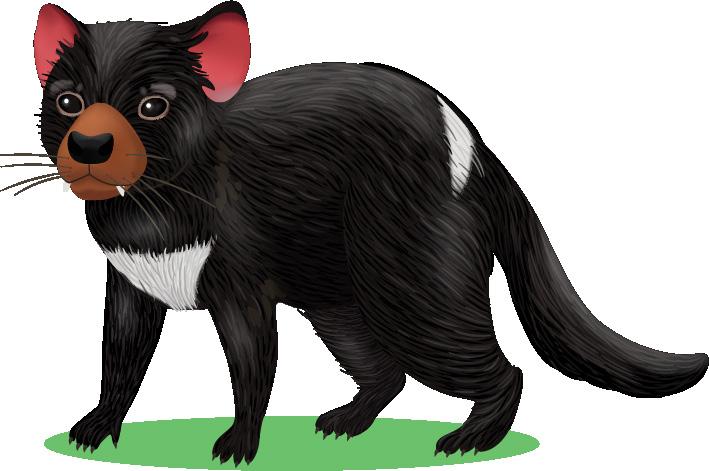
Through centuries of research, scientists have noticed foundational patterns in the unpredictable nature of cancer. Cancer is the uncontrolled growth of cells leading to the formation of tumors. These tumors can grow and migrate throughout the body, characterizing metastasis and disrupting healthy, vital tissue. The cause of this abnormal growth traces back to genes and their mutations. In the perfect storm of cancer, the genes associated with cell division and cell death are altered so cell division is overexpressed or cell death doesn’t occur when it needs to. These alterations happen spontaneously through environmental factors or inheritance. This is why smoking, sun exposure, or having a relative with cancer are known to increase the chances of
getting the disease. Therefore, it is impossible to directly “catch” a cancerous mutation like one would catch a cold.

Scientists have considered this principle strictly with the nature of cancer and its causes until the curious mass disappearance of Tasmanian devils. Researchers noticed that the dead Tasmanian devils had lumps on their faces, which were later found to be malignant tumors that were killing the animals. However, what didn’t make sense, based on what was known about the basics of cancer, was why such a significant portion of the population was being affected and killed. Elizabeth P. Murchison and her team of researchers at the University of Cambridge spearheaded this inquiry, which led to the discovery of TDFTD. By sequencing the microRNA of the tumors, they discovered that the cancer was spreadable by contact. When Tasmanian devils fight and bite each other, the cancerous cells physically move from one devil to another. These cancerous cells then evade the animal’s immune system and eventually multiply to form a tumor. This refutes what scientists thought they knew about the causes of cancer and the genetics of the disease.
Due to the large impact that this disease had on Tasmanian devils, conservation biologists have been working to try to increase the population. Isolation of the disease, vaccines, and natural immunity development have helped further this goal and ensure survival for Tasmanian devils. More recently, researchers have been able to use phylodynamics, a way to map the ancestral genetic history of pathogens, to assure that the Tasmanian devil species triumph over the disease. So, while these devils are not the most friendly of creatures, studying them has allowed us to push the boundaries and realize the deviance of cancer.
Cancer Cell (2018). DOI: 10.1016/j.ccell.2018.03.013
Trends in Ecology & Evolution (2008). DOI: 10.1016/j.tree.2008.07.001
Science (2020). DOI: 10.1126/science.abb9772
Oncoimmunology (2013). DOI: 10.4161/onci.25235
























 BY ELLA MESSNER, BIOLOGY & MATHEMATICS, 2023 DESIGN BY PARKER HITT, BIOLOGY, 2023
BY ELLA MESSNER, BIOLOGY & MATHEMATICS, 2023 DESIGN BY PARKER HITT, BIOLOGY, 2023



Barking deer. Silky-haired monkeys. Rabbits covered in stripes. For years, scientists struggled to detect the unique and elusive mammals of the Central Annamite Mountains. This region of dense tropical rainforest on the border of Laos and Vietnam is a biodiversity hotspot, full of organisms found nowhere else on Earth. Unfortunately, the area is so remote and its inhabitants so rare that monitoring Annamite species is nearly impossible using traditional methods. As a result, scientists have struggled to determine the habitat range and conservation status of many of the ecosystem’s mammals. But biologists have begun to solve this problem by enlisting an unusual set of helpers: leeches.
When a leech feeds on a mammal, proof of its meal lingers in its digestive tract for a surprisingly long time. Researchers in Copenhagen, Denmark, and Cambridge, England, found that when leeches in the genus Hirudo were fed goat blood, the goat’s DNA remained detectable in their guts for over four months. Hoping to capitalize on the persistence of mammalian DNA in leeches, the scientists traveled to the Central Annamites to see if leeches in the wild would offer evidence of their recent mammalian victims. The researchers collected 25 leeches, and, remarkably, detected mammalian DNA in 21. Among the species detected were the newly discovered Truong Son muntjac, the endangered Annamite striped rabbit, and the small-toothed ferret badger, Melogale moschata. The small-toothed ferret badger is considered a cryptic species, meaning that it is impossible to distinguish from another ferret species just by looking at it.











































However, by analyzing its DNA — in this case with the help of a well-fed leech — scientists can make the distinction. Perhaps most impressive was the ease of the collection process. Most of the leeches sampled had crawled onto the researchers’ clothing and simply had to be picked off and transported back to the lab. Evidence of Annamite mammals, which was previously so difficult to come by, had been delivered directly to the scientists seeking it.
Since this first detection of vertebrate DNA in leeches, scientists have utilized leech-derived DNA for a variety of applications. Park rangers in China’s Ailaoshan Reserve collected over 30,000 leeches in an effort to evaluate the biodiversity of the protected area. Researchers identified the DNA of 86 different vertebrate species in these leeches and determined that a greater diversity of vertebrates were found at higher elevations within the reserve. This finding suggests that human presence at lower elevations, close to the edge of the reserve, disturbs wildlife and thus provides crucial information about the effectiveness of the area’s protected status.






Even leeches that were collected for completely different purposes can be utilized for vertebrate detection. In collaboration with the American Museum of Natural History, scientists successfully identified vertebrate DNA in the guts of leeches collected over ten years prior. These leeches were sampled and preserved before the technique had been invented but yielded valuable information nonetheless. Natural history collections of leeches provide a snapshot of the past, indicating which vertebrates were present in a
specific area at a specific point in time. This historical data can help scientists understand how the ranges of animals are changing — information that is crucial as climate change progresses.
Scientists continue to hone the technique of sampling through leechderived DNA, identifying its potential applications and shortcomings. DNA extracted from leech guts can of course only be used to detect the animals that leeches feed on, excluding animals that live in trees and other hard-to-reach habitats in addition to any animal a leech simply prefers not to target. Therefore, the absence of an animal’s DNA in sampled leeches doesn’t necessarily indicate the absence of that species. However, leeches are fantastic at capturing the blood of small mammals, which many traditional sampling strategies struggle to detect. As an additional advantage, collecting leeches requires minimal training and can easily be integrated into the job of a park ranger. Analyzing leech-derived DNA can best be utilized as one of many biodiversity sampling techniques. Along with live traps, camera traps, and animal track surveys, leeches have become a tool that allows scientists to uncover the diversity of life in some of the world’s most extraordinary ecosystems.






































Invisibility — a superpower that once only seemed possible in the Harry Potter universe — is actually more realistic than we think. A special organism found in South American rainforests, aptly named the glass frog, is a virtually transparent amphibian with translucent green skin, muscle, and tissues. Only the frog’s major organs are visible when asleep, allowing it to peacefully rest on tree leaves with little fear of predation. The frogs achieve this incredible form of camouflage by packing red blood cells into their livers, which is both a fascinating biological adaptation and a valuable avenue for research into fatal blood clot prevention.

Translucence is rare in organisms that live on land since their bodies have many essential substances that absorb light, making them visible. One important example is hemoglobin, a protein found in red blood cells that delivers oxygen around the body. Even though the glass frogs’ tissues are transparent, the hemoglobin they contain is not. Thus, when glass frogs are active, their blood vessels are visible since light can’t pass through the hemoglobin within them. However, their red blood cells seem to magically vanish when they’re asleep, rendering them translucent when at their most vulnerable.
Researchers at Duke University sought to understand exactly where these red blood cells go when the frogs are at rest. They used photoacoustic microscopy, a noninvasive technique that converts absorbed light energy into ultrasonic waves, allowing for deep, high-resolution, and high-speed imaging of biological tissue. This technique is especially useful for imaging through opaque organs and capturing spatial hemodynamics without disrupting the frog’s circulation.
Using this imaging, the researchers found that sleeping frogs circulate very little hemoglobin — a whopping 89% of the frogs’ red blood cells aggregate in their livers. However, hemoglobin flow quickly increases as they wake and become active since their cells require more oxygen. It only takes seconds after beginning exercise for the frogs to lose much of their transparency due to an increased presence of hemoglobin. Overall, the study shows that the density of red blood cells in circulating plasma accurately predicts the level of transparency in glass frogs. Scientists hypothesize that the frogs display decreased metabolic activity or non-oxidative metabolic processes (those not requiring oxygen) in order to compensate for decreased hemoglobin in circulation.
The glass frog’s strategy is a clever one that defies expectations. Typically, when blood cells collect, they coagulate to form a clot. This can become a scab to heal a wound, or if inside a blood vessel, can block the circulatory system and be fatal. Unfortunately, about 100,000 people in the United States suffer deadly blood clots each year, according to the CDC.
Shockingly, glass frogs avoid this complication. They can control when their blood clots, so they’re able to prevent serious blockages but can still form scabs when wounded.
Studying glass frogs can produce important results about hemodynamics and how to prevent blood clot formation in the human body. The frogs pack and unpack a high concentration of their red blood cells every day without dangerous clotting events. This is likely due to a combination of biochemical factors and physical changes and remains an active avenue for research. One possibility is a method called clot contraction, which restores blood flow by decreasing the area blocked by coagulated blood. Luckily, glass frogs are a fantastic species for live animal research, since natural hemodynamic processes can be observed without restraining the organism or using contrast agents to help with imaging.
When it comes to glass frogs, one thing is clear — they are an invaluable species with the potential to greatly improve human health outcomes. By studying these masters of invisibility and how they dynamically change their red blood cell concentrations, scientists can determine ways to avoid deadly blood clots in humans and develop new anticoagulant drugs, saving countless lives.
Science (2022). DOI: 10.1126/science.abl6620
Science (2022). DOI: 10.1126/science.adf7524
Blood (2014). DOI: 10.1182/blood-2013-08-523860
Follow us: @nuscimag



Read our work: nuscimag.com
Contact us: nusciencemag@gmail.com